C Language Download
Learn via video course

Overview
To install the C language on Windows, we need to set up a C environment that consists of a C Compiler Eg. MinGW, GCC, LCC, etc., and a text editor Eg. TextPad, Notepad++, etc. Then we have to set the path for the compiler to the environment path variable, write a c program, save it with extension .c, and execute. Or we can install IDE(Integrated Development Environment), which already consists of the text editor and compiler under one GUI(Graphical User Interface)
Eg. Code::Blocks, Dev C++, Turbo C++, etc..
Scope
- This article explains the step-by-step installation of C Environment and how and from where to download the software.
- The link to download the software is shared within the steps.
- The article shows the screenshots and the steps for installation.
C Environment Setup
Suppose a person wants to code and execute a C program on a Windows computer then firstly he needs to code it somewhere, and another part is the program should be understood by the computer as a C program so, to execute a C Program the person needs two tools installed. The C compiler tools will compile your code and convert it into an object file that will be further executed by loader(part of a compiler), the second one is the Text Editor, where the person will type the code. It completes the C language download and installation process on your pc.
Let's see from where both can be downloaded and how they are installed on a Windows PC.
Text editor
The text editors are used to type the program i.e., the source code. The file where the code is written is saved with the .c extension. The very basic example of a text editor on Windows is Notepad. There are many text editors available on the Internet like vim(which runs on Linux as well as windows), Textpad, Notepad++, Subline text, etc.
The source file, which is written in a text editor, is compiled by the c compiler to be understood by the computer and give you the required output according to your input.
The C compiler
The C compiler is used to convert the source file to executable code so that the program can be run by our machine. There are many C compilers available like GCC(GNU Compiler Collection), Intel C++ compiler, Clang(by apache), MinGW, LCC, etc. The most used and available free compiler is GNU. It compiles both C and C++ codes, all the C compilers that are on the market can compile C++ codes also. The compiler is the main part of C language download and installation.
Let's see the complete installation of the Turbo C++ IDE and compiler step by step.
Turbo C++
Turbo C++ is C and C++ compiler and integrated development environment from Borland.
STEP 1: Download Turbo C++
To download Turbo C++ click here. or There are many other websites where Turbo C++ is available to download. Some of them are mentioned below. Before downloading, please ensure that you have the firewall on or you have installed any of the antiviruses on your computer (for security purposes).
- Turboc .me
- Filehorse
Hence the further steps will be the same if the file is downloaded from another website. It is suggested to download it from the above link as it will instantly start the download of the zip file.
STEP 2: Create turbo C directory in c drive and extract the tc3.zip
Locate the tc3.Zip in the download folder.
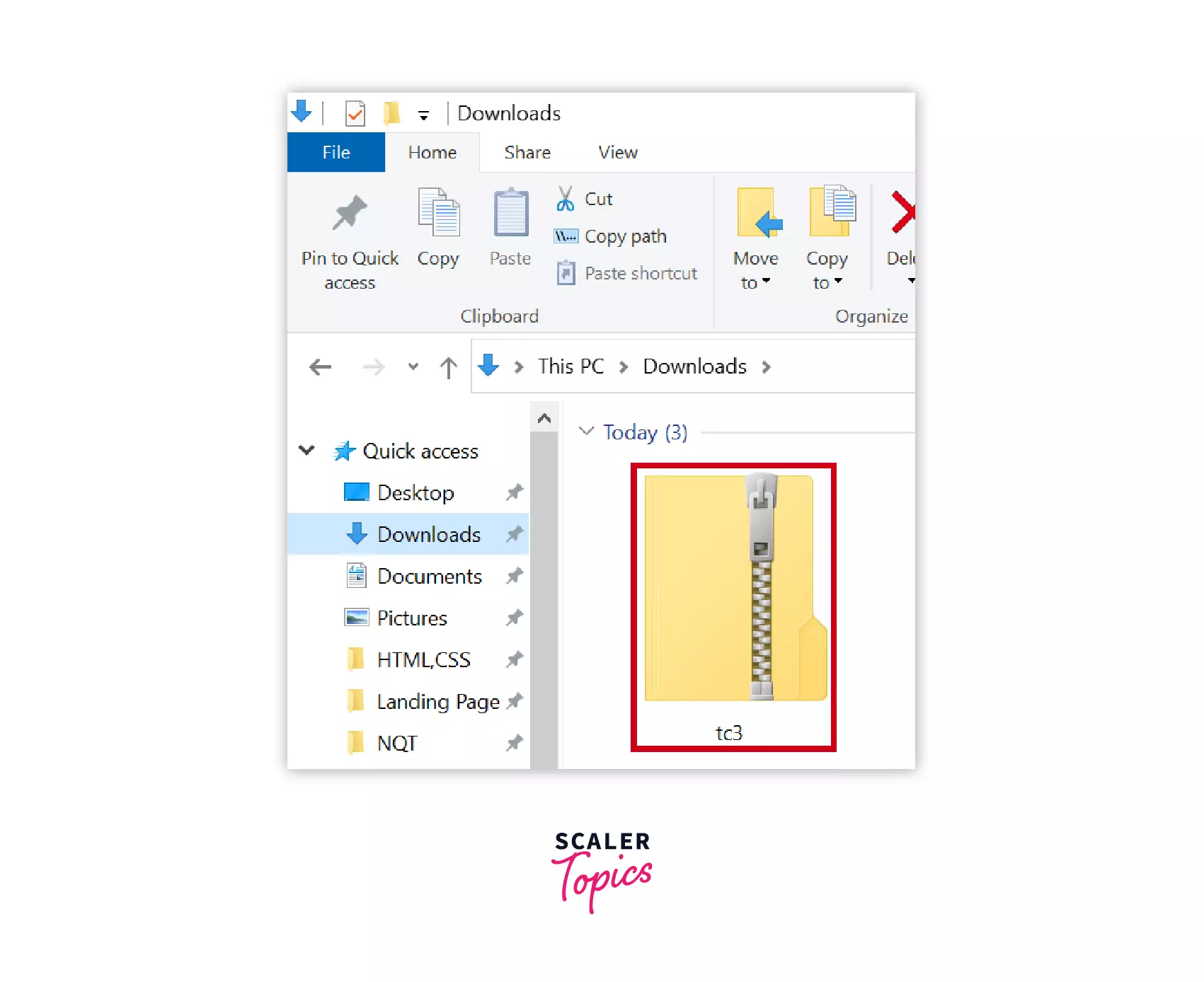
Now create a turbo C directory in the C Drive on your computer.

To extract the tc3.zip file in the turbo C directory, go to your location where you downloaded the tc3.zip file. Right-click on the file and Extract to the path location of the turbo c folder in the C drive.

STEP 3: Double click on the setup.exe file and follow the steps for installation
Double click on the setup file.

Here, the installation is getting prepared.

The preparation of installation is completed to proceed further, click on the next button.
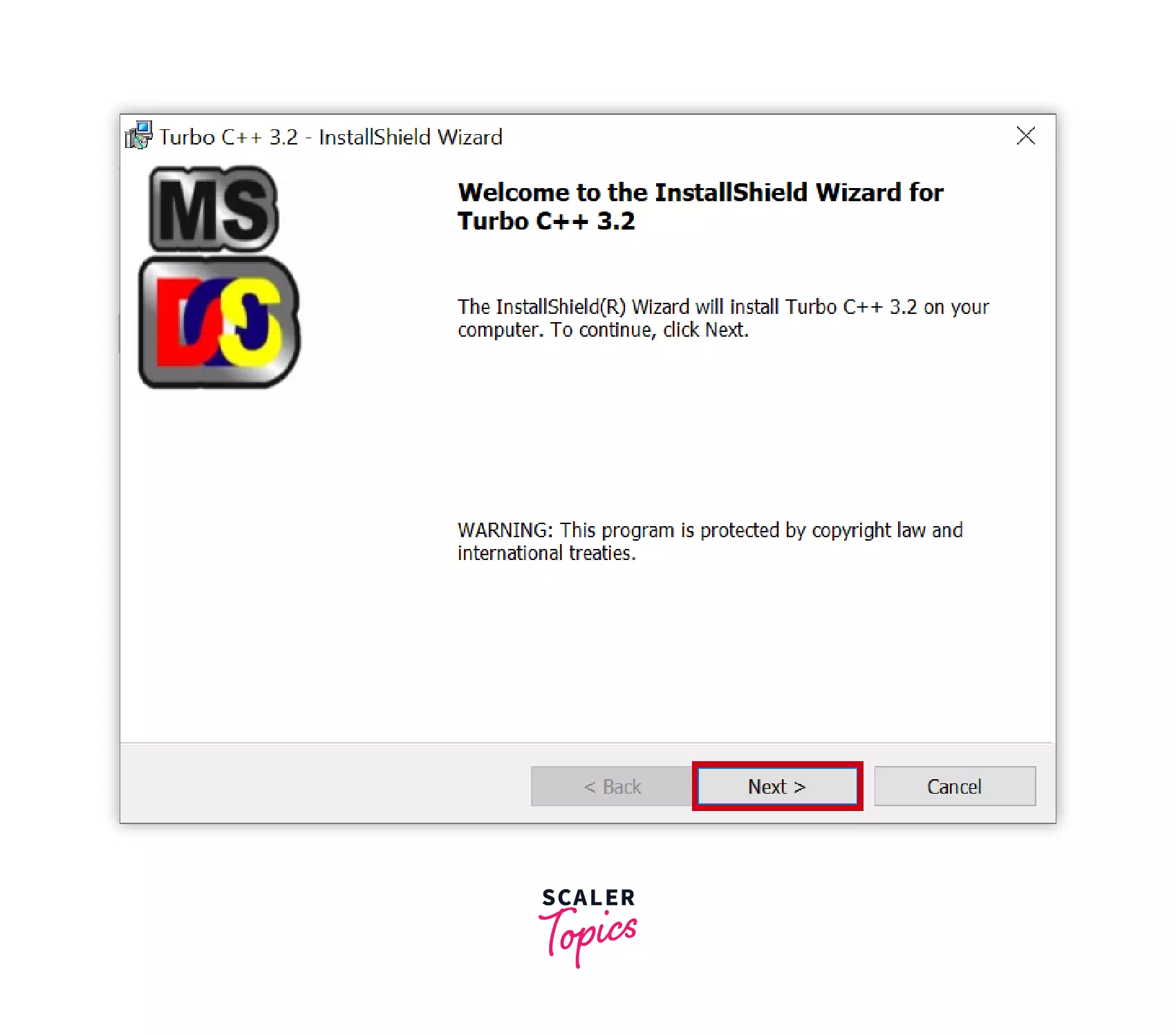
Accept the terms in the license agreement by checking the I accept radio button and clicking on next below to continue.

STEP 4: Installation is ready
The InstallShield Wizard is now ready to begin the installation. If you missed some steps you can go back from here to the previous step by clicking the back button otherwise, click the Install button to start the installation.

STEP 5: Starting the installation
After clicking the Install button the installation begins. This will take some time to complete.

STEP 6: Installation completed
The InstallShield has successfully installed Turbo C++. Just click Finish to exit the wizard.

STEP 7: Start Turbo C++
Start Turbo C++ by clicking the Start button.
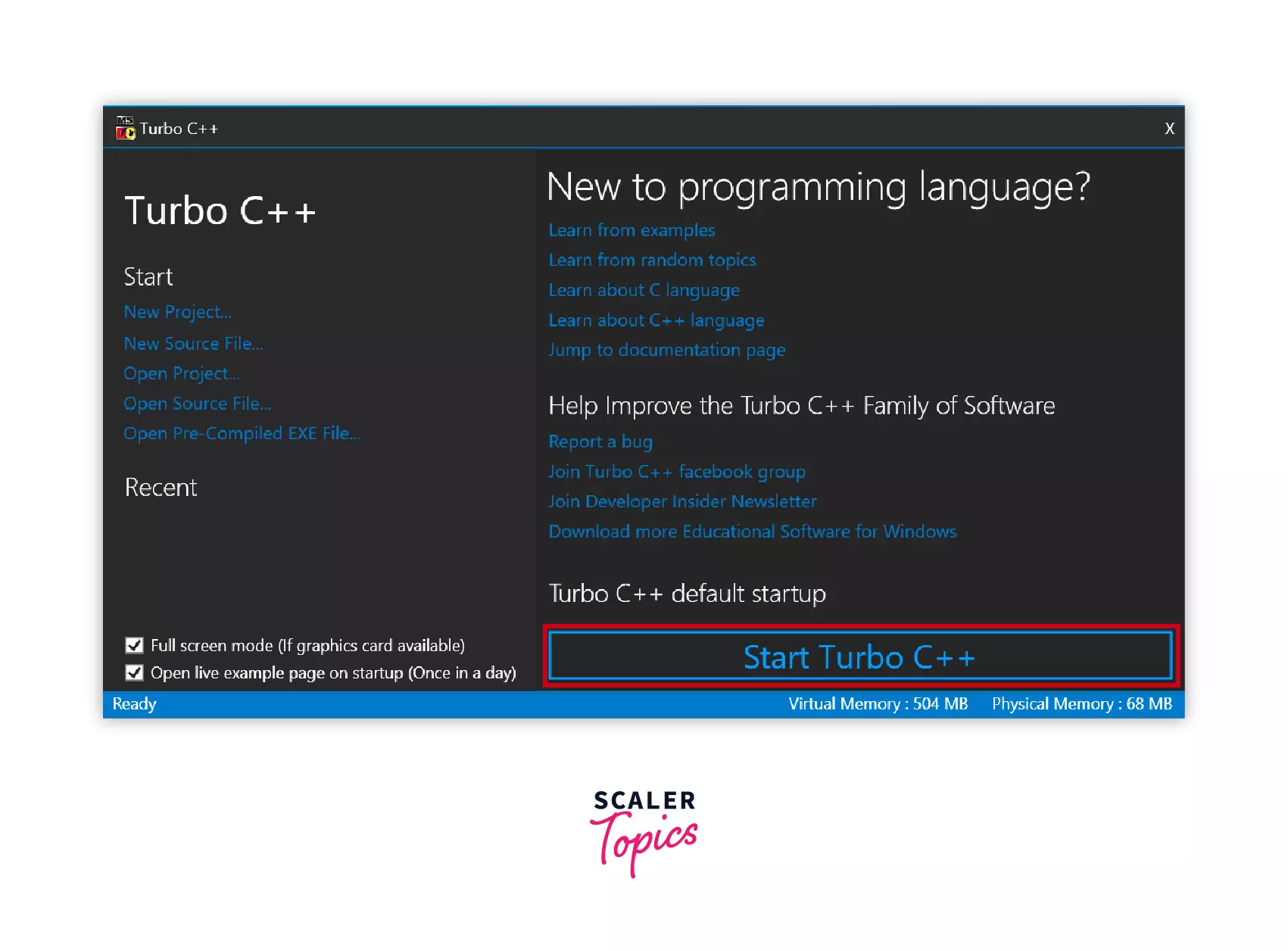
STEP 8: Write a hello world program
Write a hello world program in C and save it with extension .c.

STEP 9: Compile the program
Go to compile option in the menu or press Alt+F9 keys to proceed with compilation.

Here the compilation is completed, if there are any errors, the compiler will show errors in the pop-up, the same for the warnings, and if there are no errors, it will show 0 errors.

STEP 10: Run the code on Turbo C++
Go to the Run option in the menu or press Ctrl+F9 to run the program. Since the program is compiled, it is converted into an object file to be executed by the machine.

Other Methods To Install C
Many other IDEs can be installed C on Windows that have in-built compilers. Some of them are listed below.
- Dev C++
- Code::Blocks
- Cygwin
Let's see how to install them on Windows PC.
1. Install dev C++
Dev C++
Dev-C++ is a full-featured C and C++ Integrated Development Environment (IDE) for Windows platforms. It is the easiest and most clean IDE to practice C Programming, especially for beginners.
You can download Dev C++ from the websites given below:
- Sourceforge
- Bloodshed
Below are the steps to download and install the Dev C++ IDE.
STEP 1: Download the Dev C++ IDE
To download DEV C++, just go to your favorite browser and just simply type DEV C++, and the first website will be Sourceforge.
Click on the link and it will take you to the download page of Dev C++.

Now just click on the link and you will be redirected to the download page of DEV C++. From there click on the green-colored download button and the download will start in a few seconds. The downloaded file can be seen in the download folder, double click on the file.

STEP 2: Start the setup
Now the setup will load as seen in the picture. Wait until it loads to 100%.
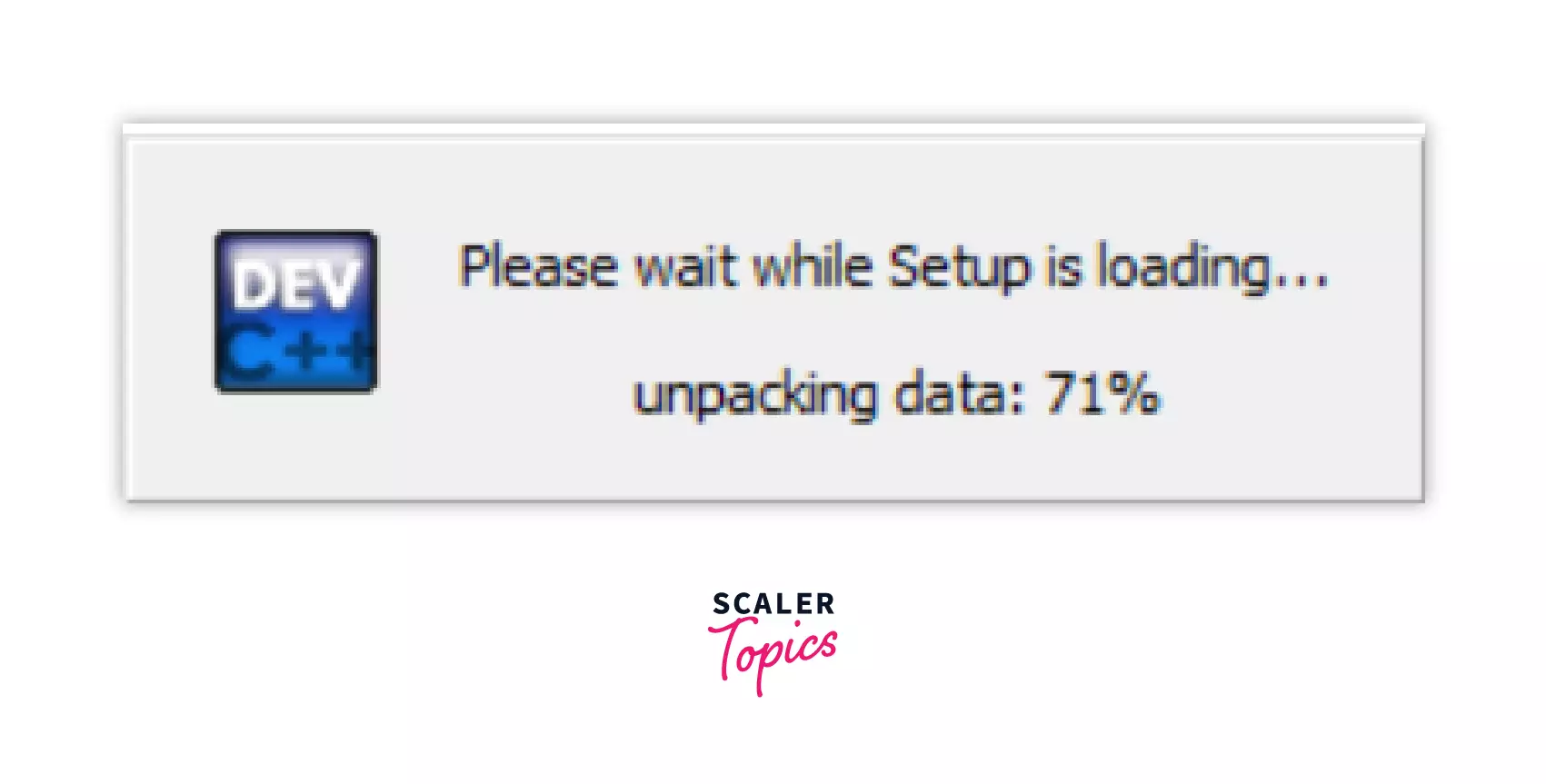
STEP 3: Select the language and accept the license agreement
Now choose the language you want the application to be installed in, and then click on the ok button and proceed.
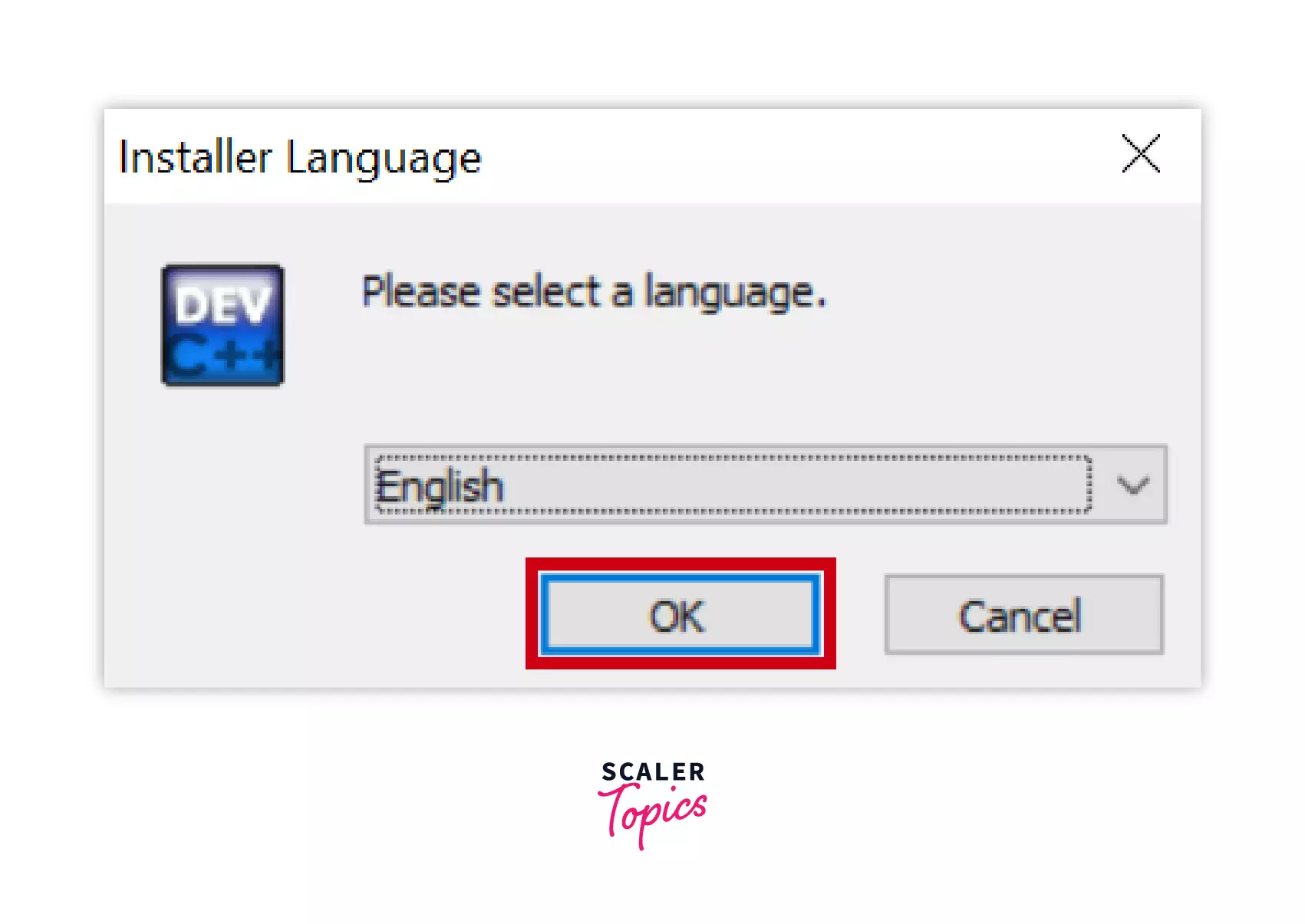
Now, here the license agreement and terms and conditions will appear on the screen click on I Agree button and proceed further.
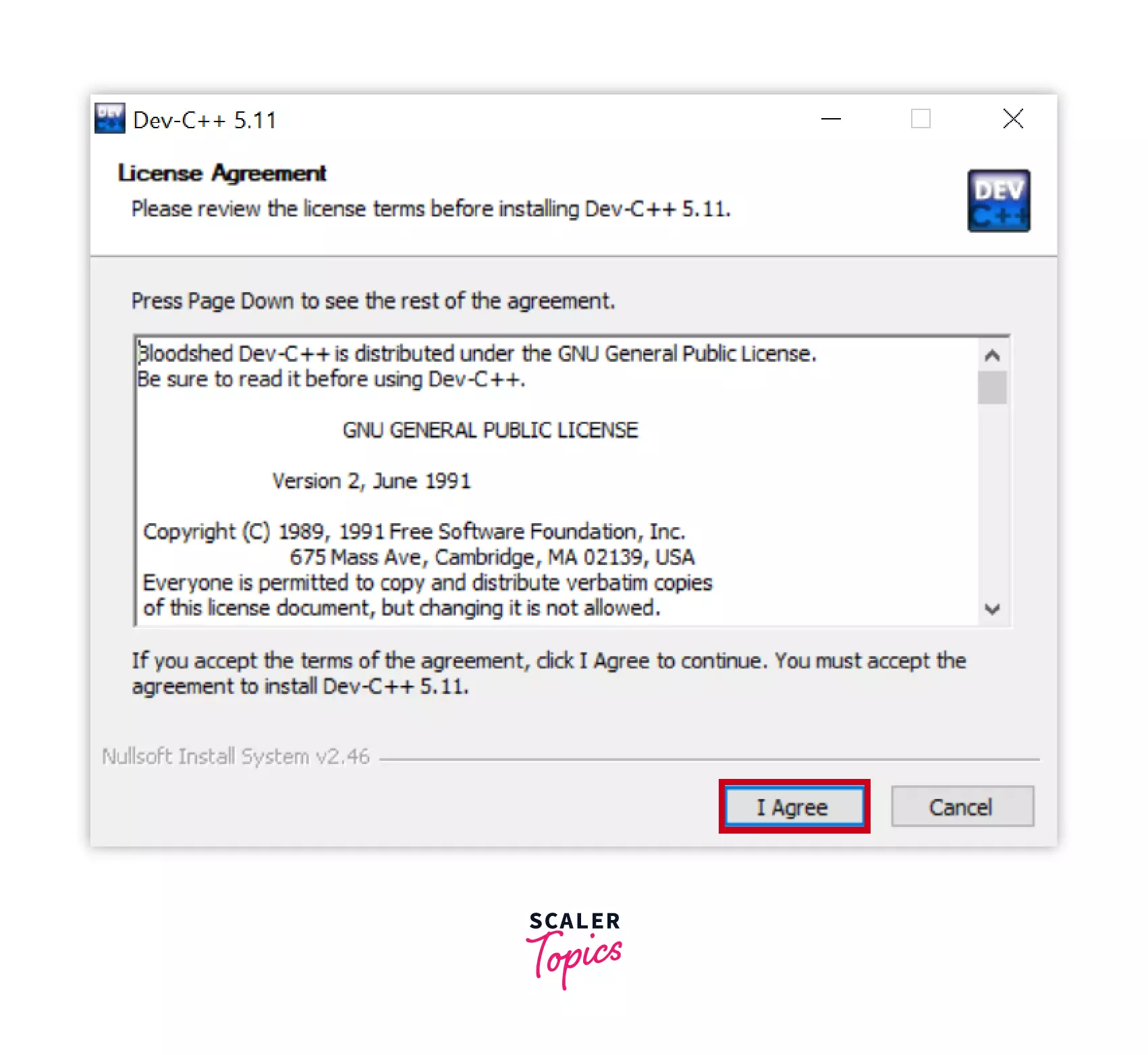
STEP 4: Choose components
Choose the components you want to install with the application, or you can unclick the checkboxes if they are not needed. It contains the components like Icon file, Compiler, Language file that are required to run the IDE properly.
In general, choose the full from the dropdown and click next to proceed further.
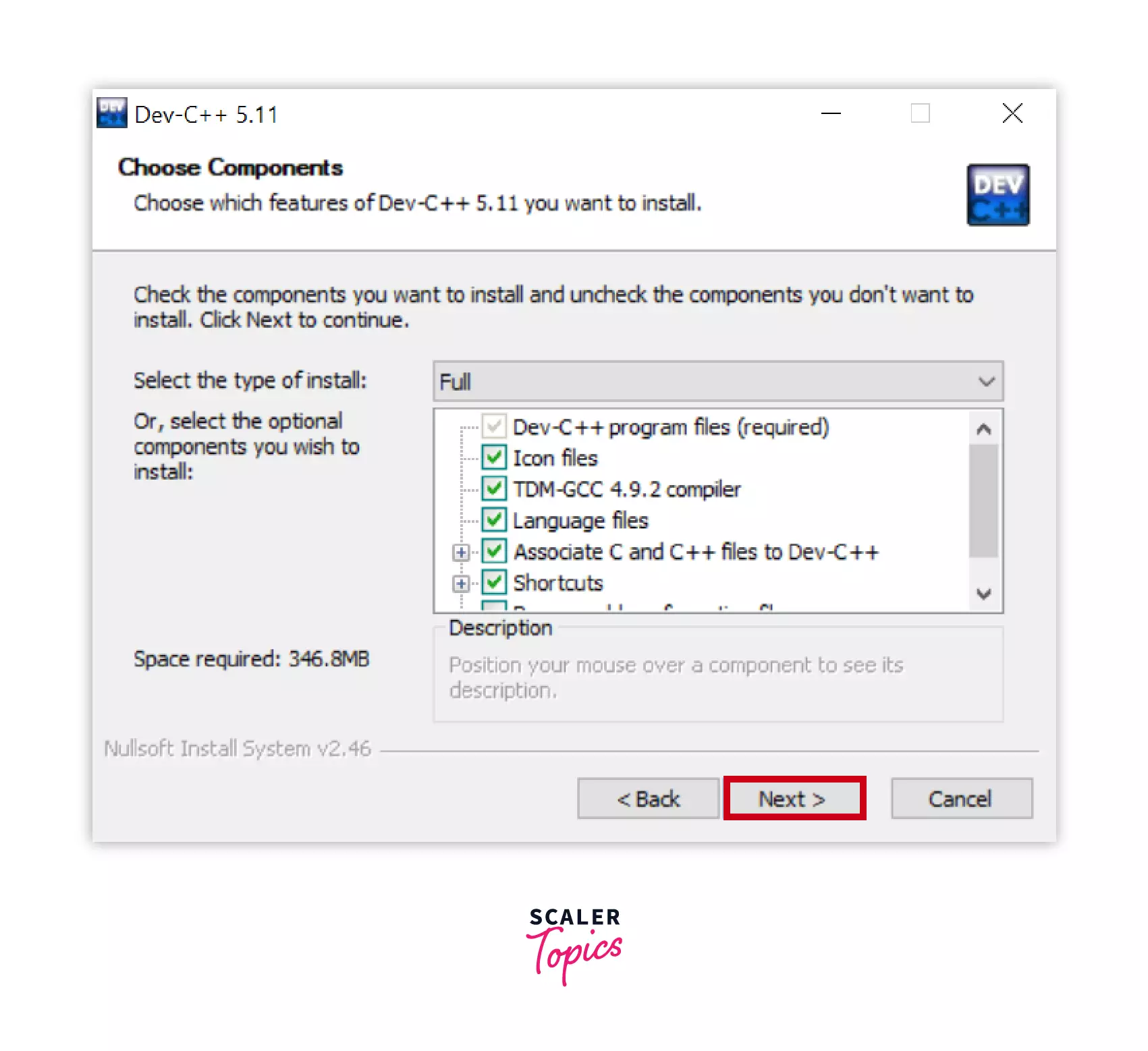
STEP 5: Choose the install location
Choose the location on the drive where the application is to be installed. It automatically takes the C: Drive location. To change it, click on browse, choose the location, and click next to proceed.
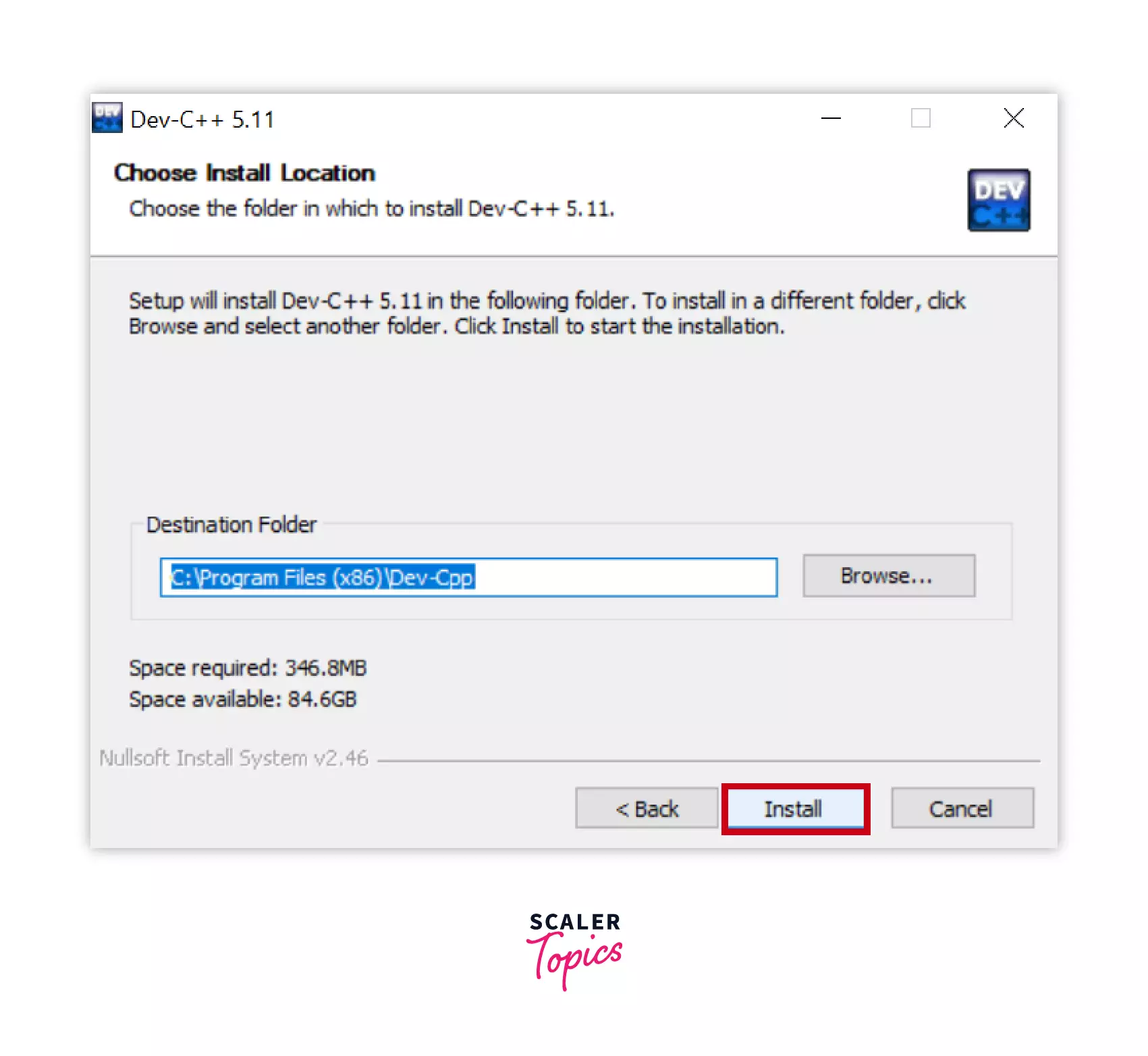
After all the configurations, the installer will install the application on your windows computer. It will extract all the files to your chosen location in the previous step.

STEP 6: Finish
If the previous step is completed, the finish button will appear below, click on it to complete the application installation, and by checking the Run Dev C++, it will open the application just after finishing the installation.
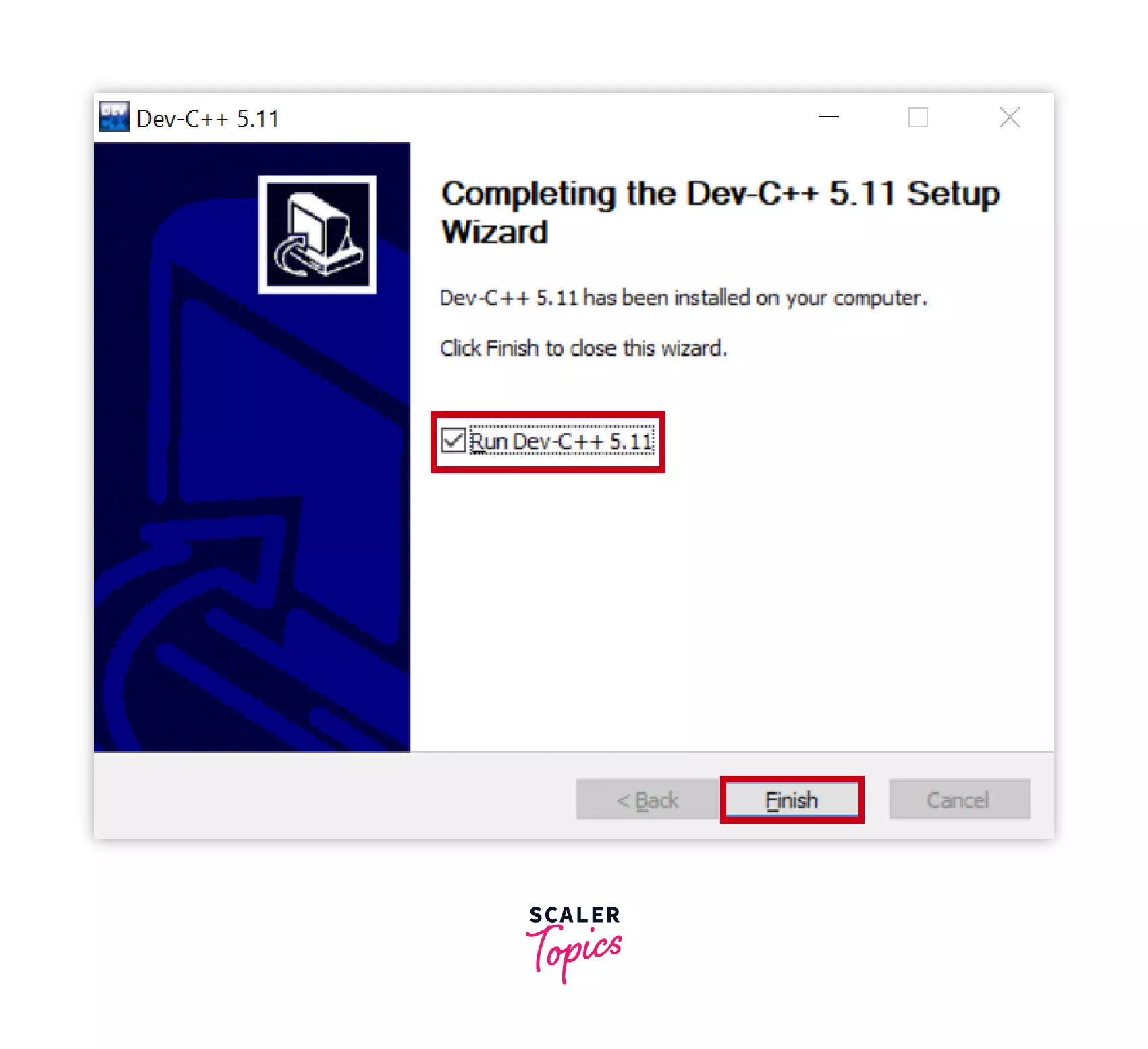
STEP 7: Open a new file in Dev C++
The Dev C++ application will now open. Let's run a hello world program to check if it is working correctly. Go to Files>>New>>Source File and click on it.

STEP 8: Write a hello world program
Write the Hello world program in C Language.

STEP 9: Saving the file
Now save the source file with .c as an extension as it is the extension for the c language.
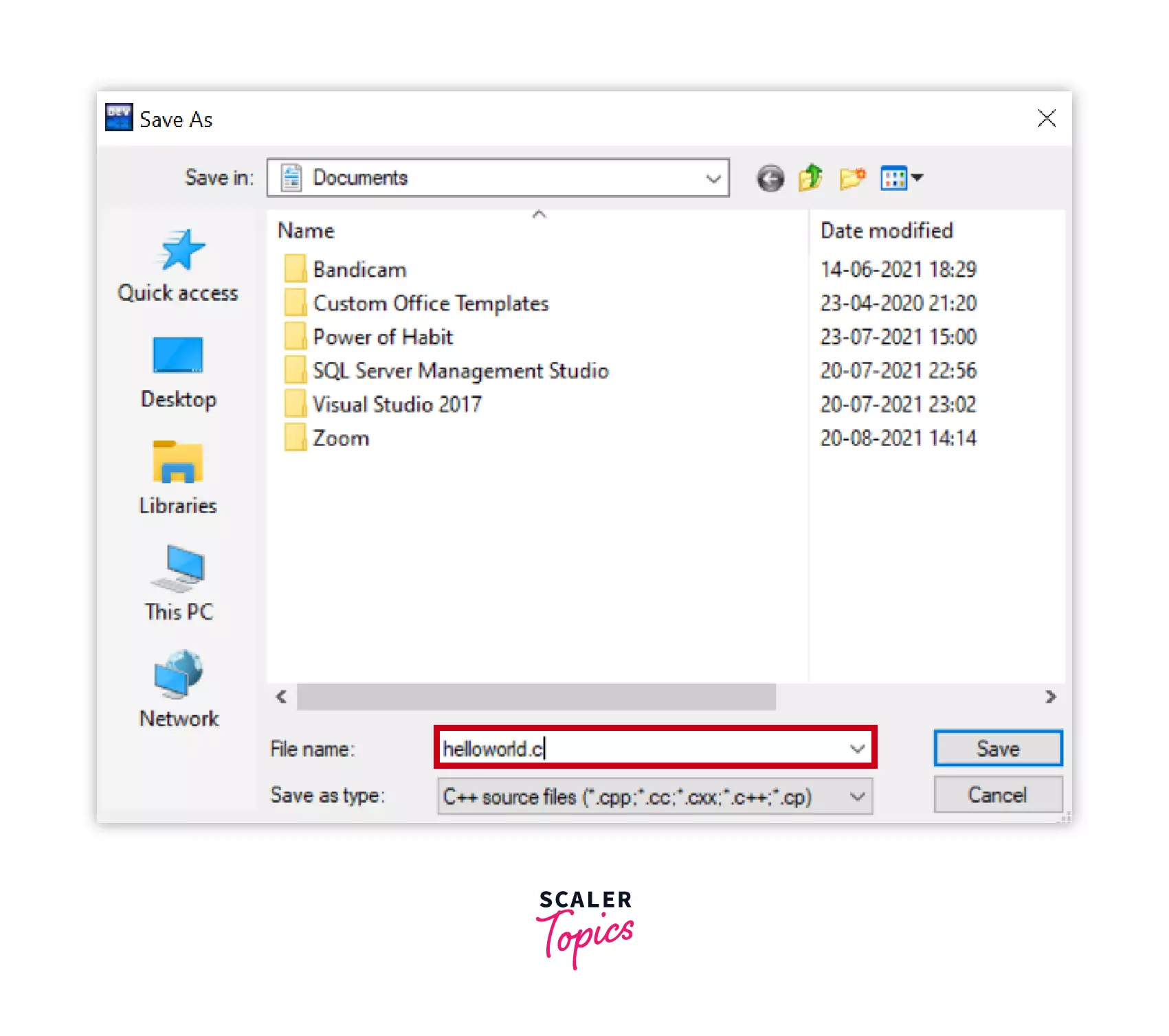
STEP 10: Output
Now go to ** Execute>>Compile and Run**and the program will execute. The output can be seen on the console.

2. Install Code::Blocks
Code::Blocks
Code::Blocks is a free C/C++ IDE. It can be extended with plugins. Any functionality can be added by installing/coding a plugin. For instance, even compiling and debugging functionality is provided by plugins!
You can download Code::Blocks from the following websites:
- Codeblocks
- Sourceforge
Below are the steps to download and install the Code::Blocks IDE.
STEP 1: Website to download Code::Blocks
The first step to installing the Code::Blocks IDE is to go to any of the browsers and open the Code::Blocks official website. The below screen will appear on your screen, on the left side, click on the Downloads.

There are different ways to download and install Code::Blocks on your computer, so after clicking on the downloads on the downloads page, click on the Download the binary releaseas we are going to use this way to download for this tutorial.
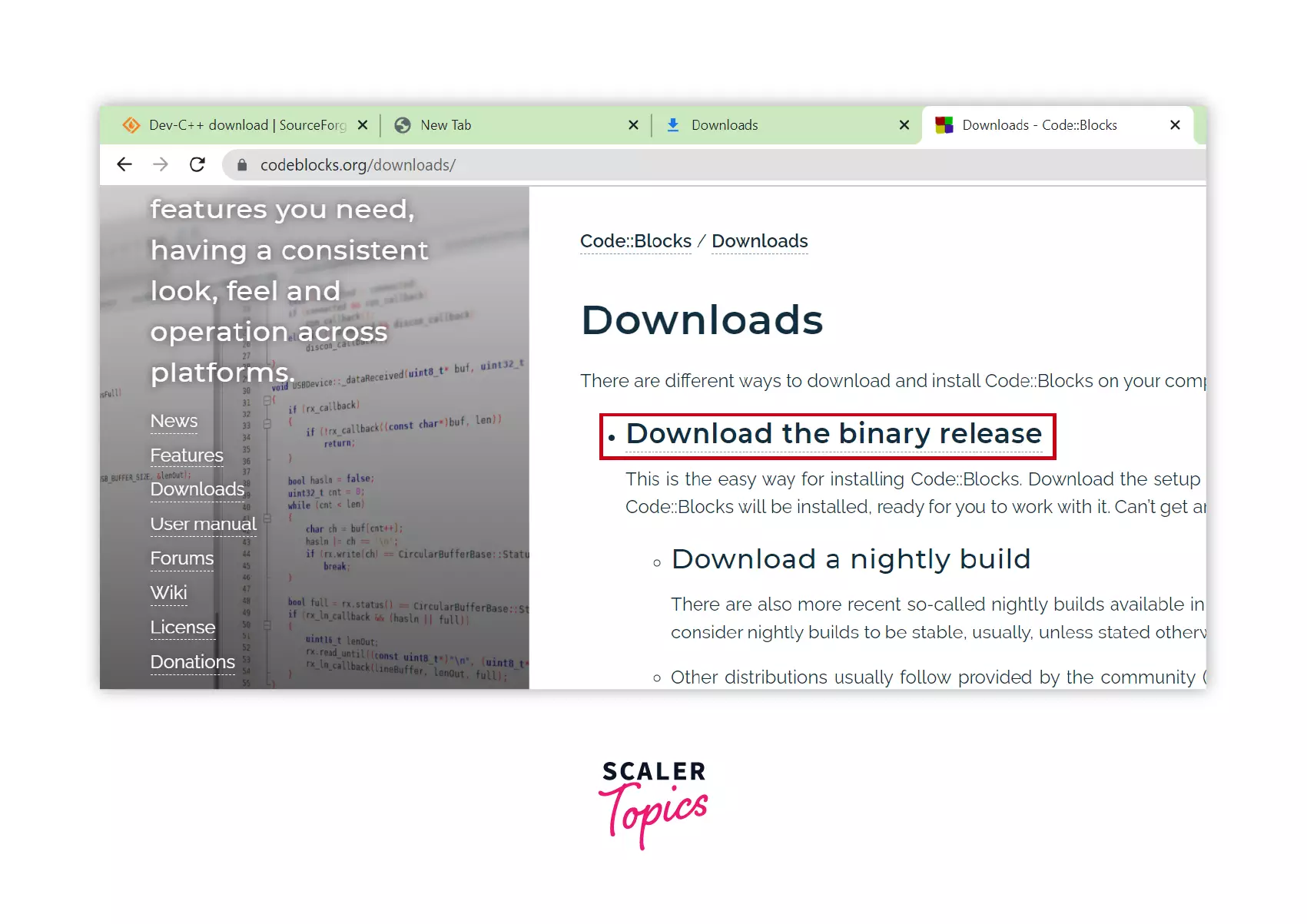
STEP 2: Choose the version for download
Now here in the Windows section, click on the codeblocks-20.03mingw-setup.exe (for the 64-bit version). The codeblocks-20.03mingw-setup.exe comes with the MinGW, which includes the GCC/G++/GFortan compiler and GDB debugger.
For 32-bit choose the codeblocks-20.03mingw-32bit-setup.exe
And download the file from the link in front of the selected version as highlighted in the screenshot below.
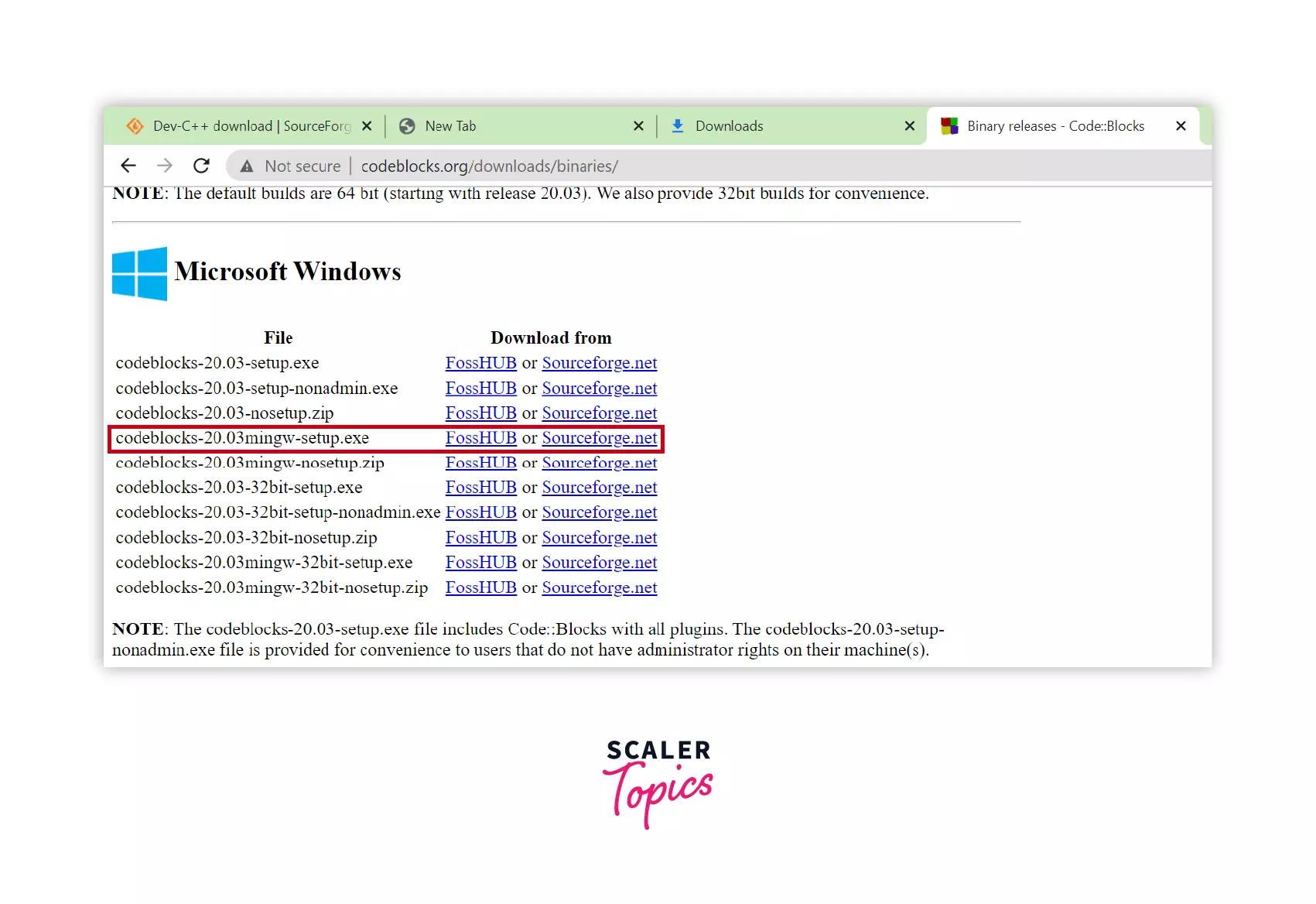
Here the download has started. It can be seen on the bottom left side of the browser.
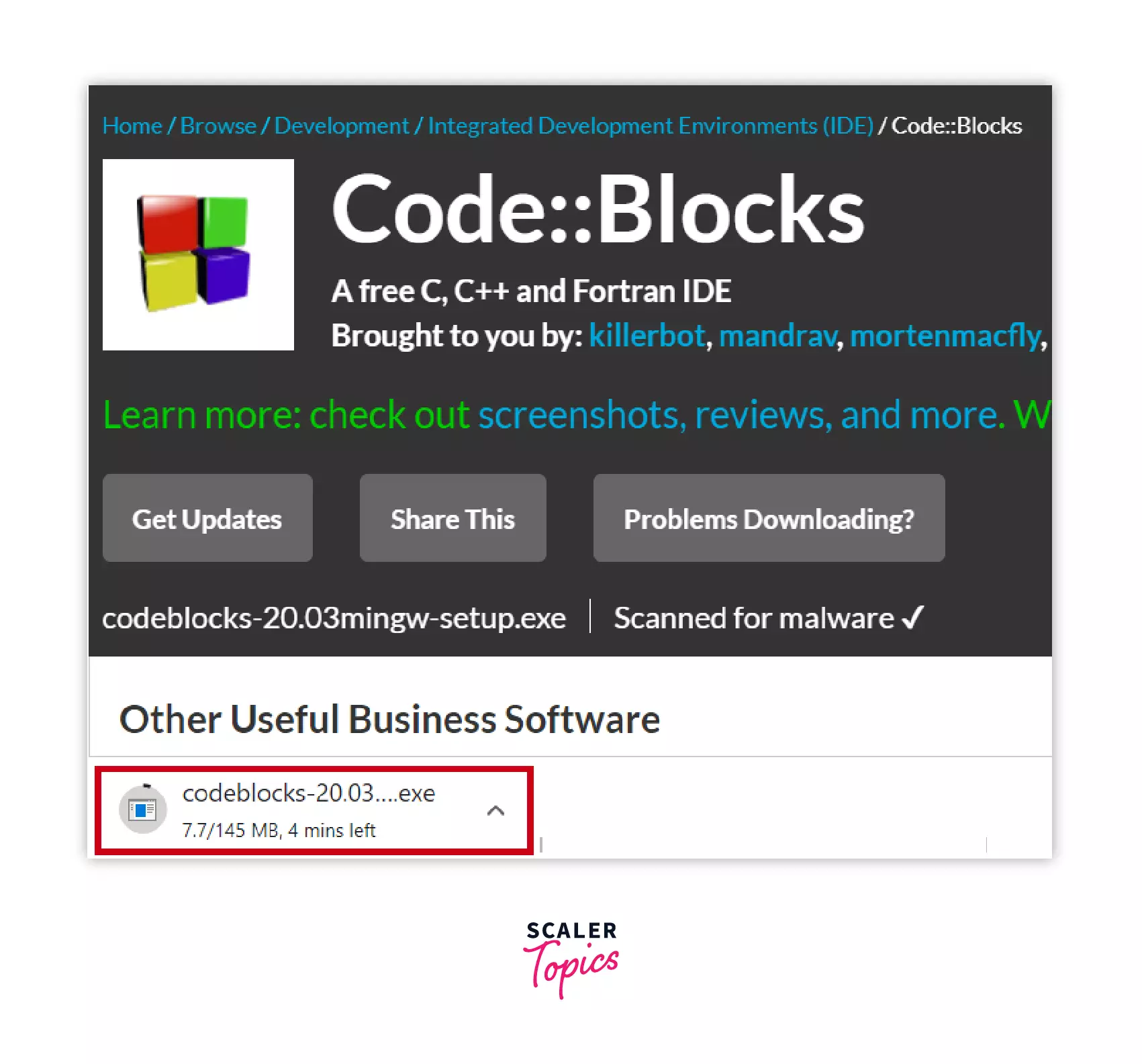
STEP 3: Start the installation
After double-clicking on the downloaded installation file, the window below will appear on the screen, just click on the Next button and proceed further.
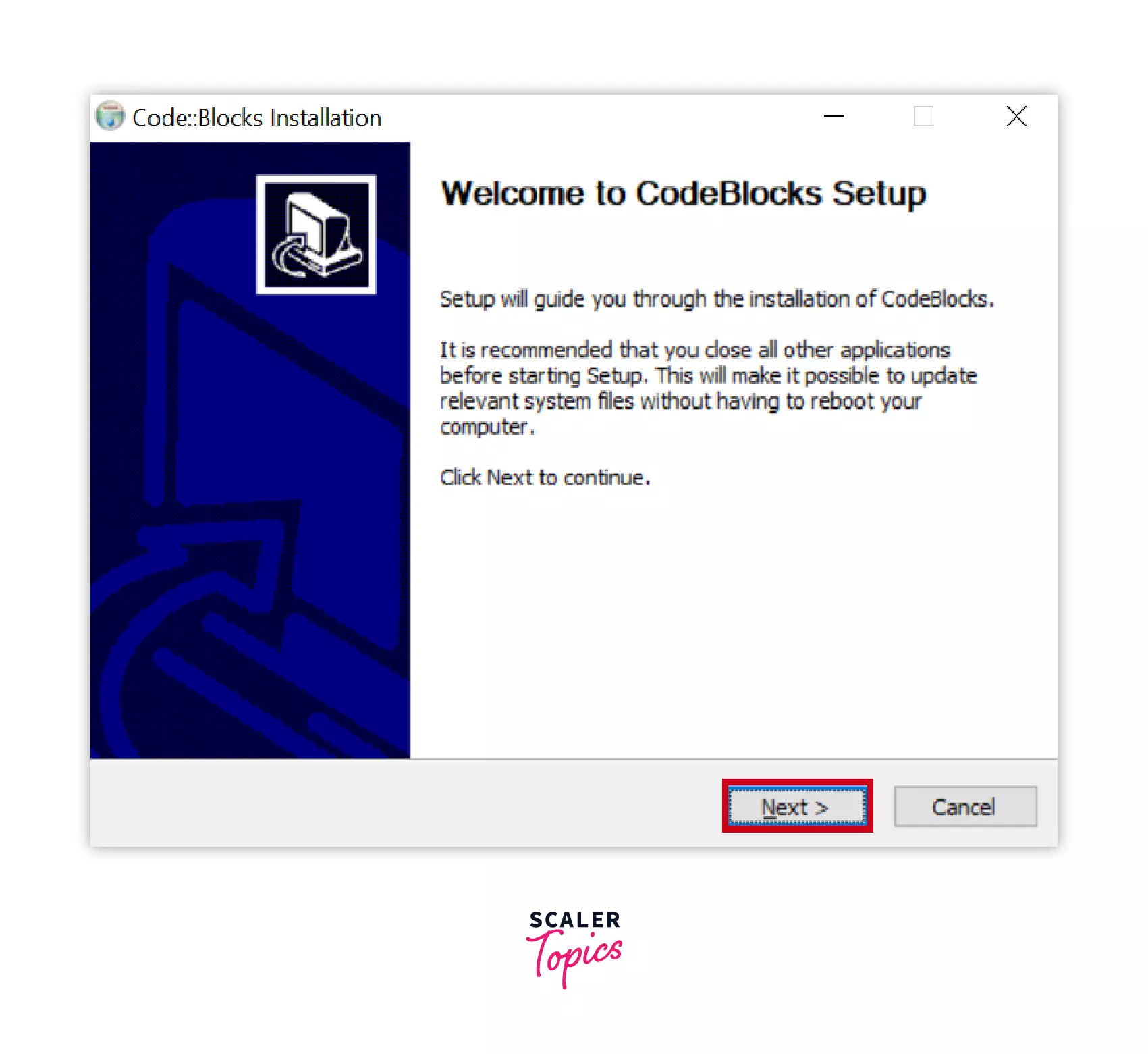
Here, the license agreement for terms and conditions will appear on the screen click on the I Agree button and proceed further.
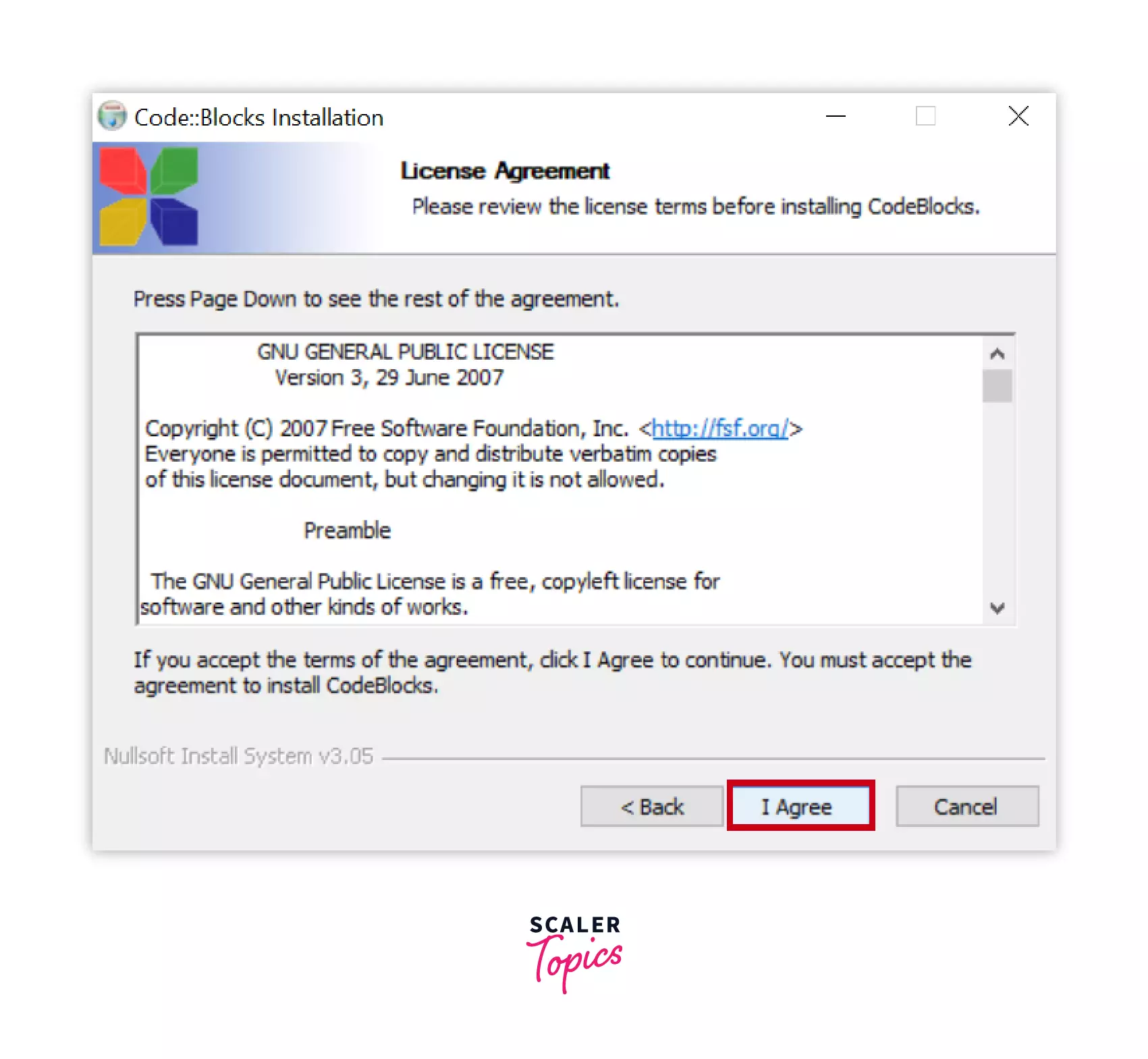
STEP 4: Choose components
All the components like plugins and a compiler for the installation will appear in this step. Please don't change anything and click on the Next to continue.
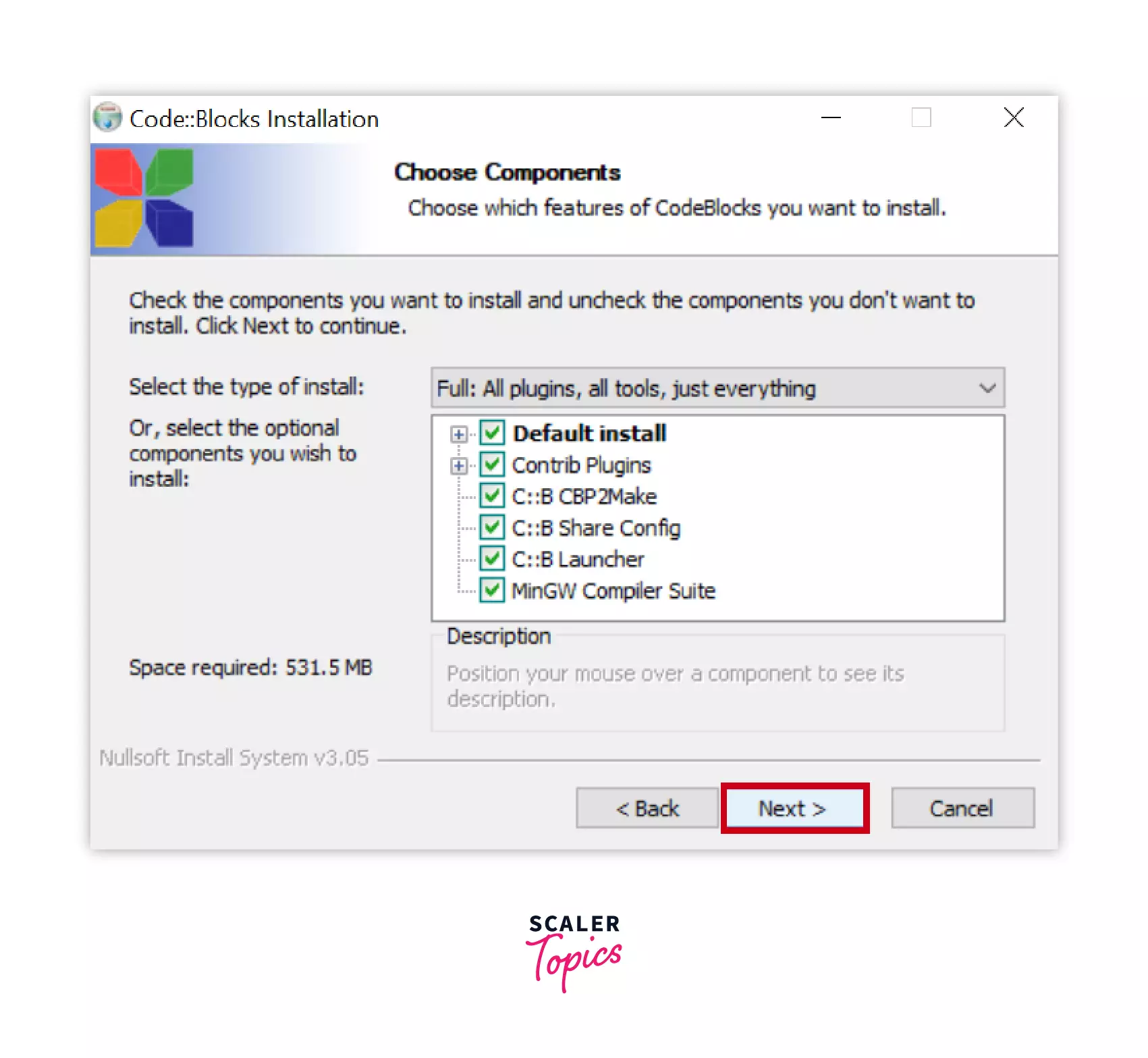
STEP 5: Choose to install location
Choose the location on the drive where the application is to be installed. It automatically takes the C: Drive location. To change it, click on browse, choose the location, and proceed further.
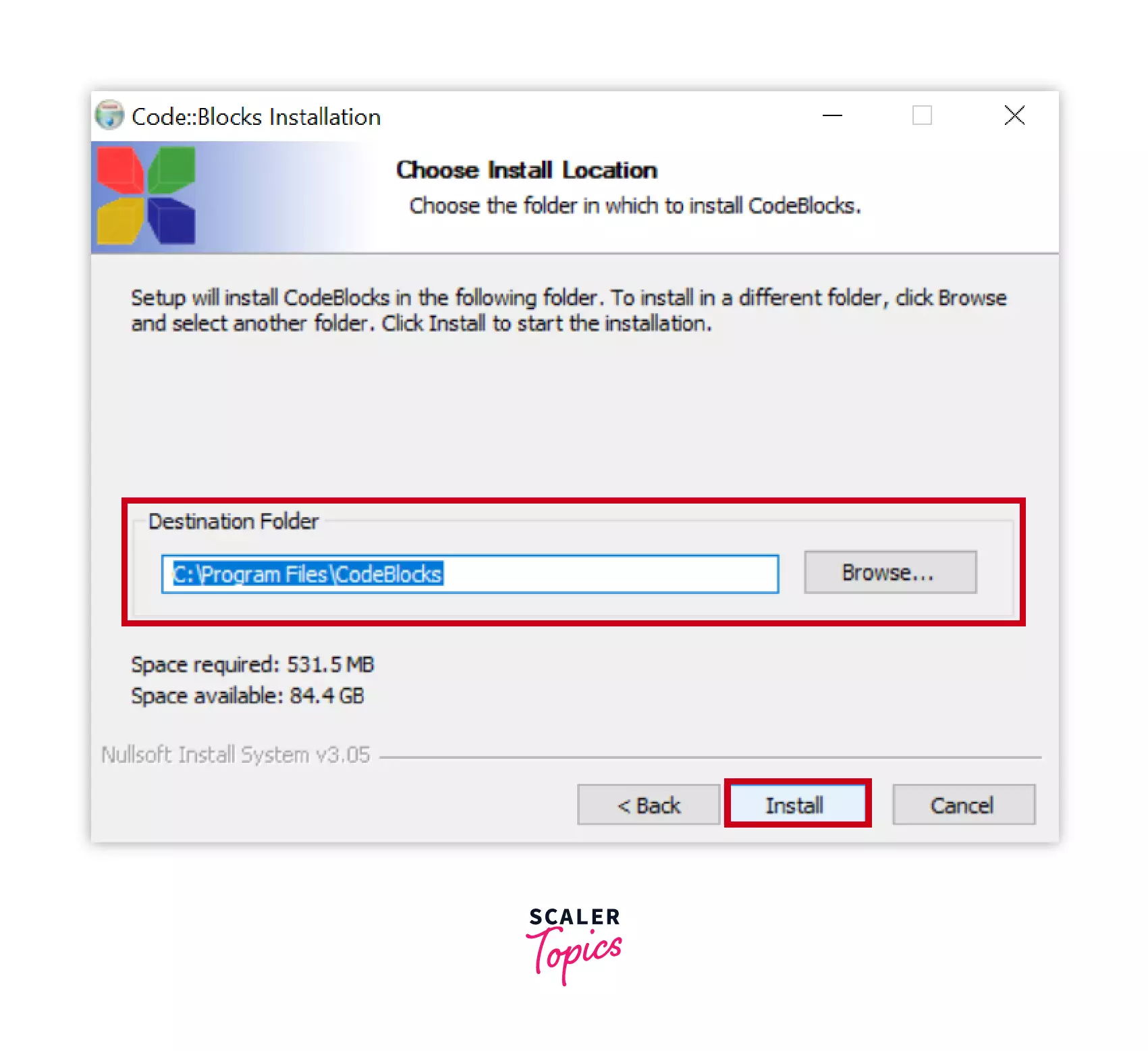
Now the installer will extract the files on the destination folder you chose in the previous step, and installation will begin.
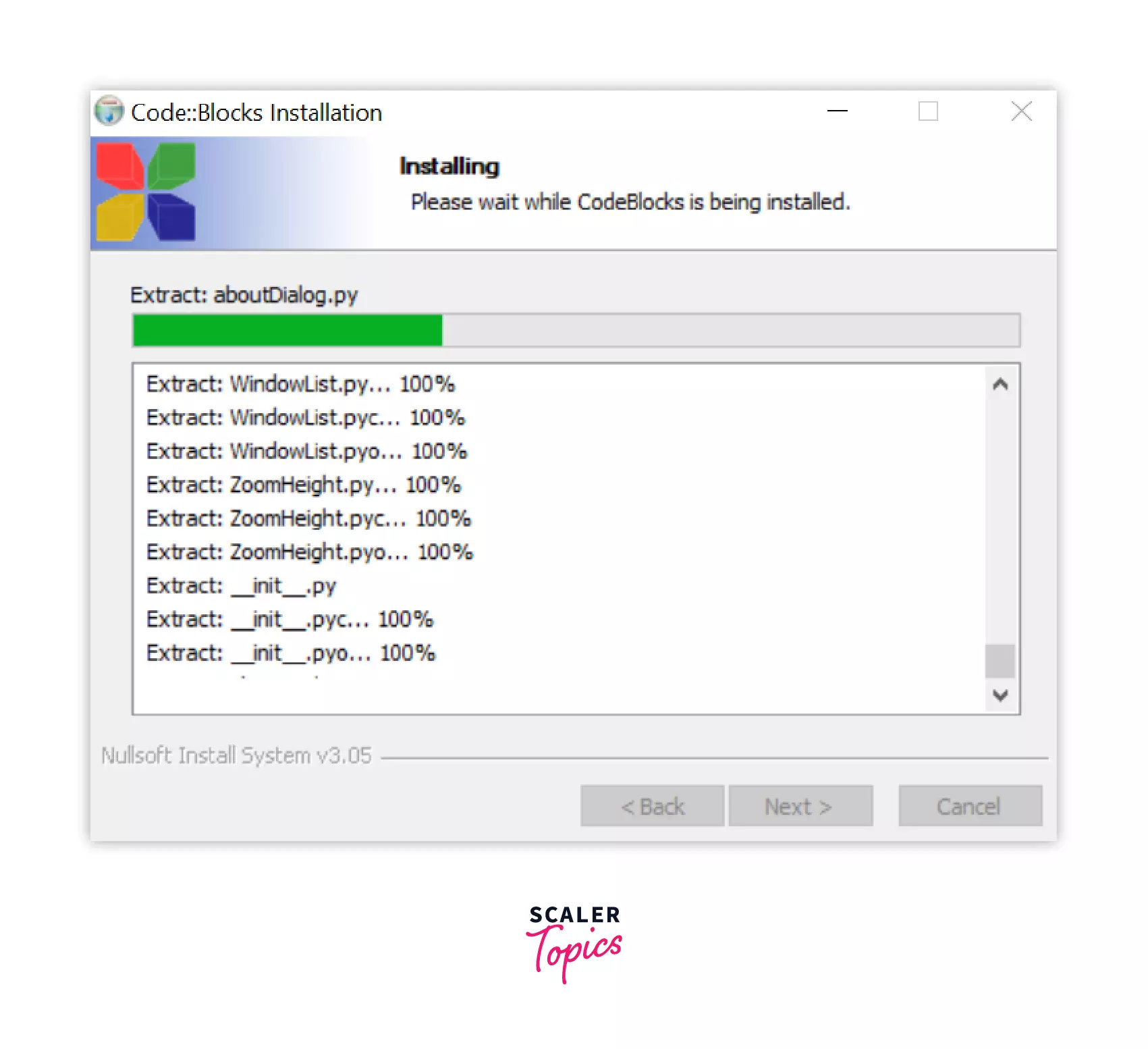
STEP 6: Installation complete
The installation is completed successfully. If you want to open the Code::Blocks IDE, click on the Yes button.
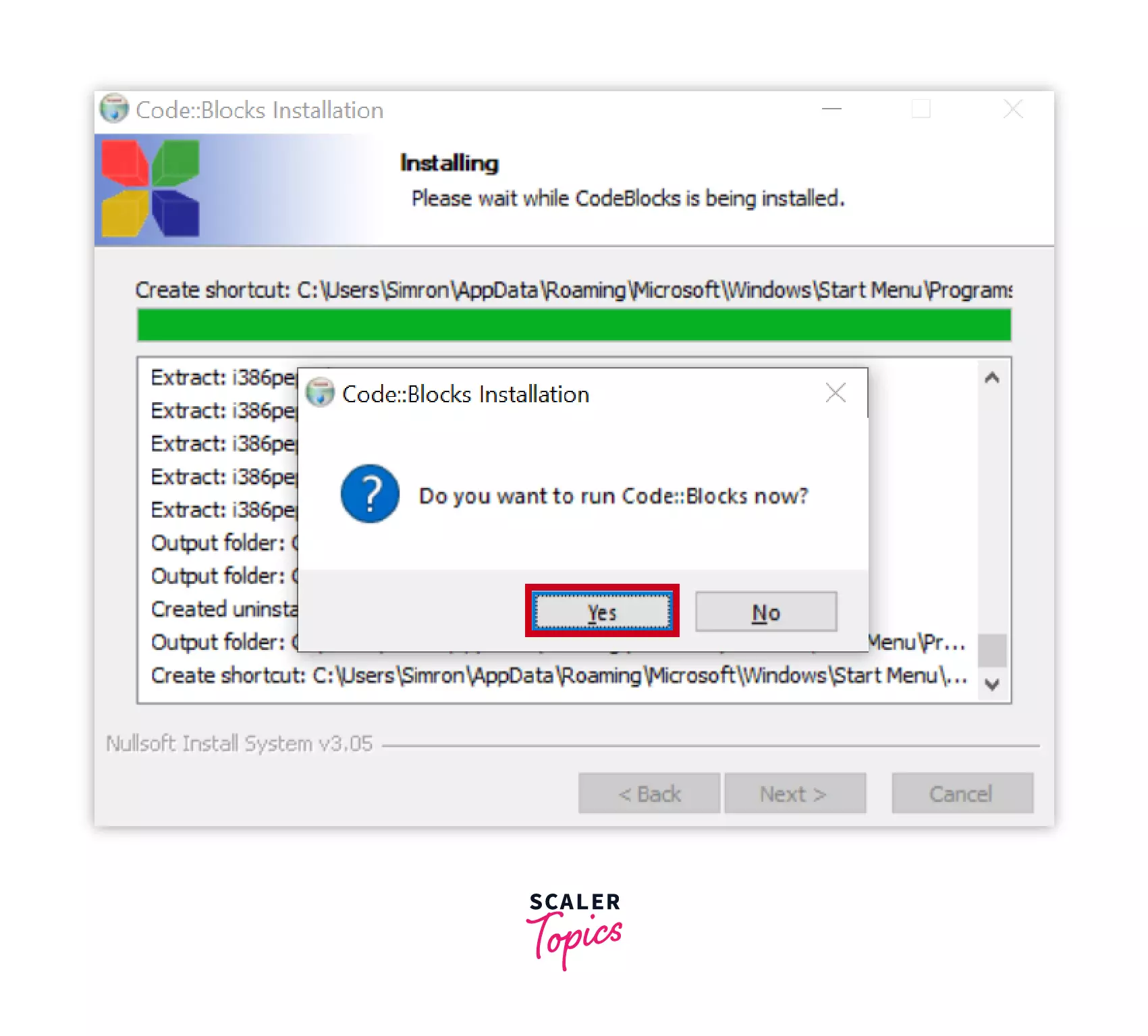
STEP 7: MinGW configuration
But before going to the further step, the location of the MinGW is to be added to the path environment variables so that you can run the C program from any directory on your computer.
Now go to the Folder of the MinGW on your computer. path : C:\Program Files\CodeBlocks\MinGw\bin. The following folder will open on your computer. Just copy the path on the address bar by right-clicking on it.
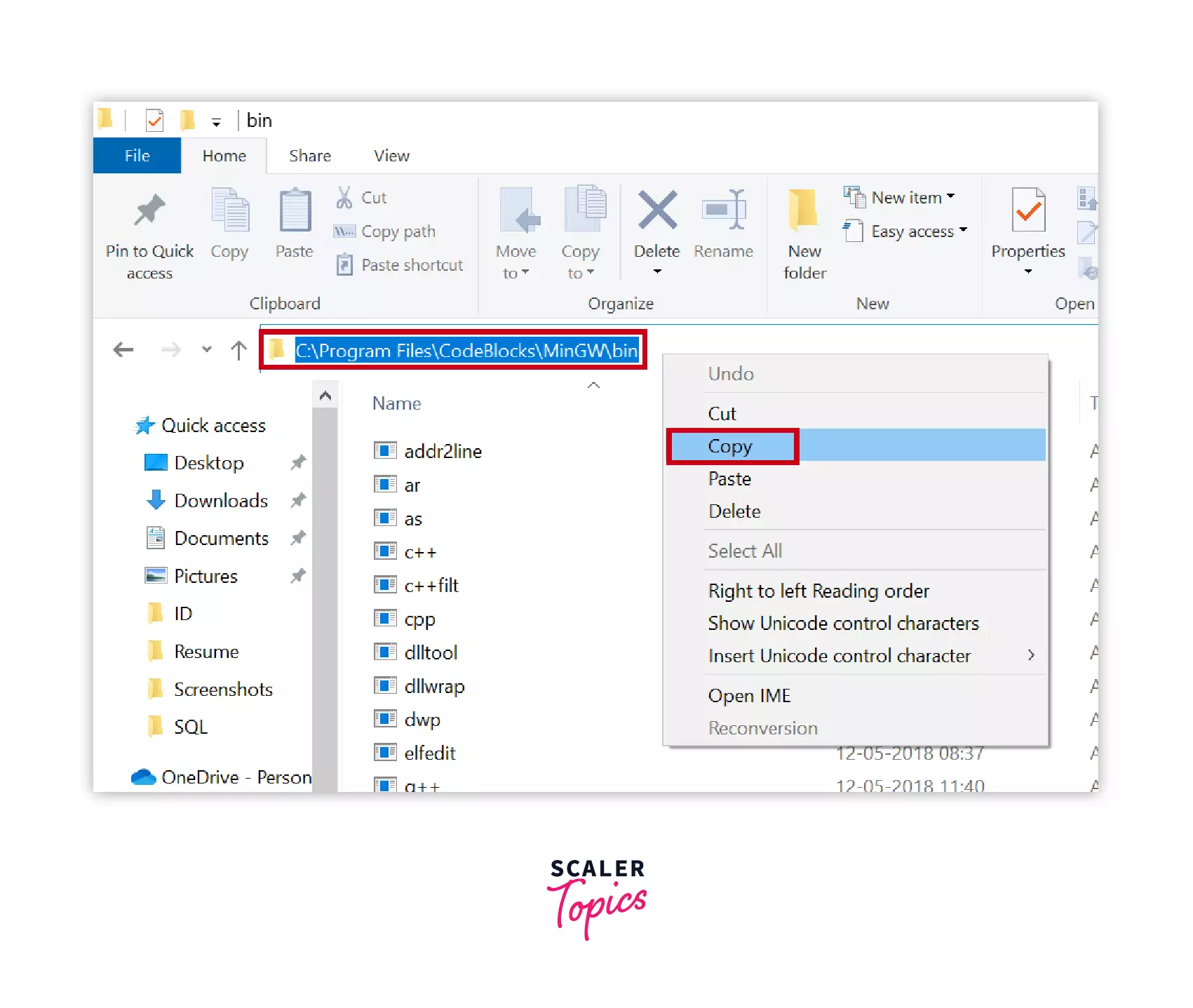
STEP 8: Set the environment path variable for MinGW
Open the control panel on your computer.

Go to the System and Security section of the control panel.
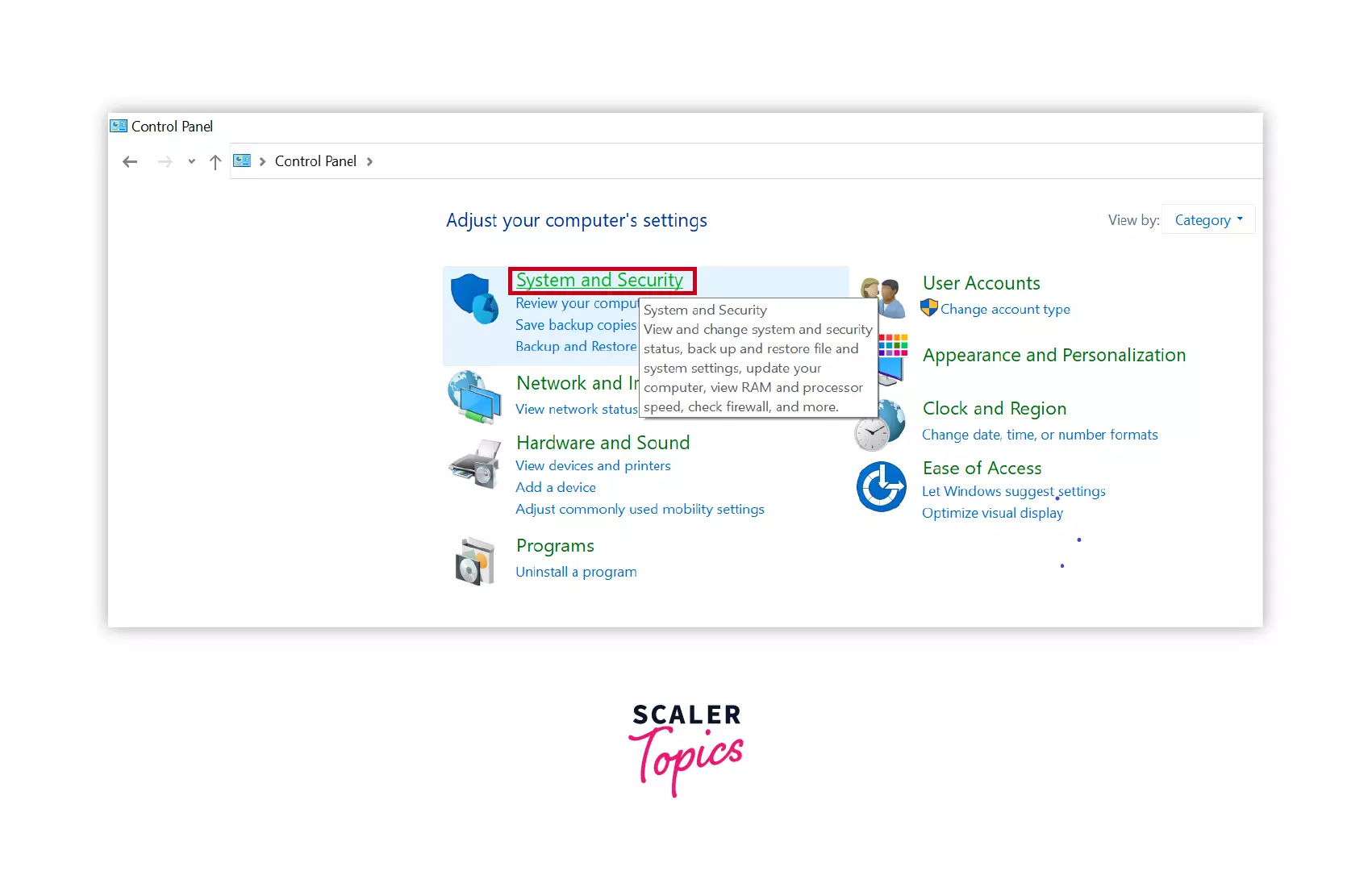
Go to System inside System and security in the control panel.
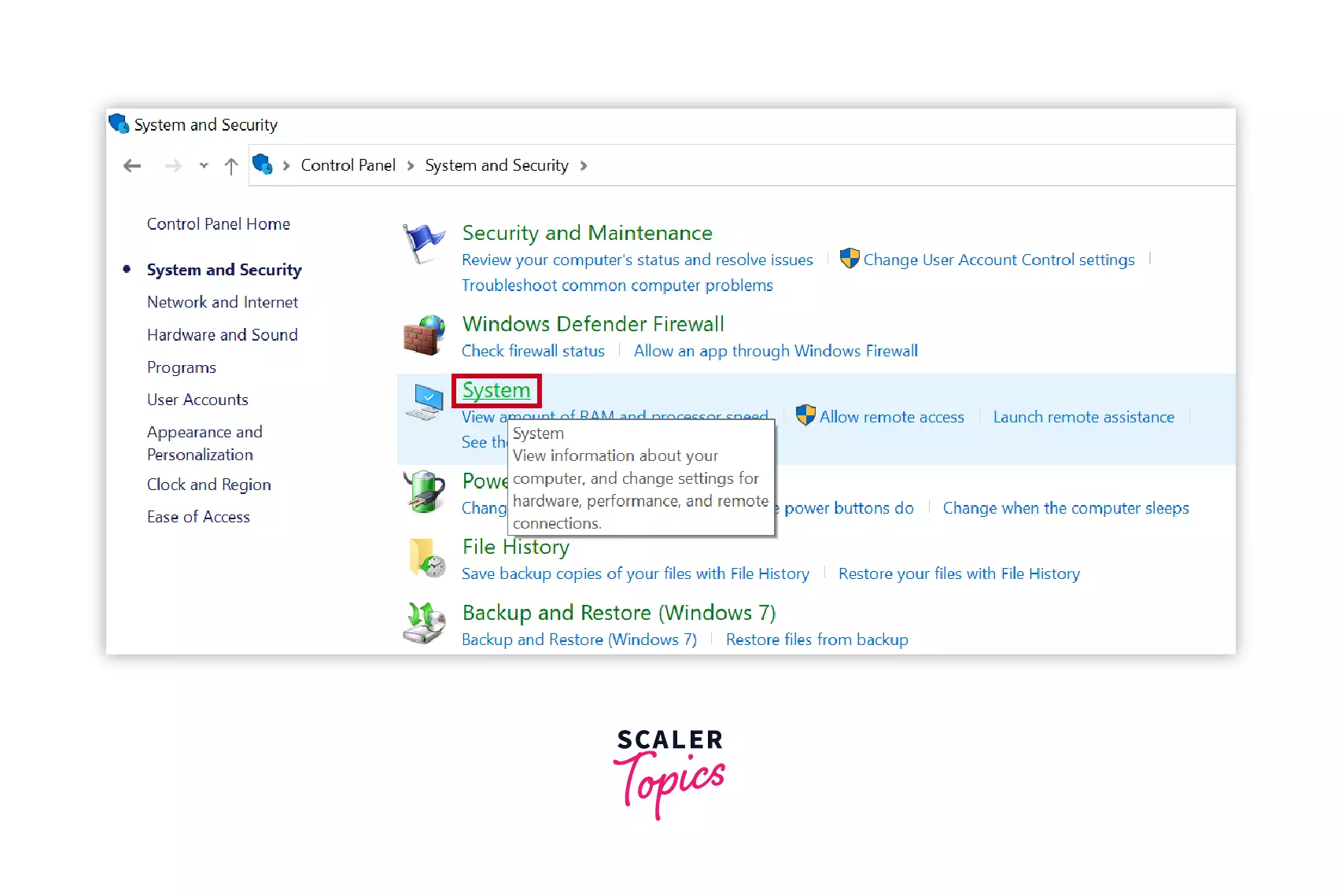
Now, on the left side, click on the Advanced system settings.
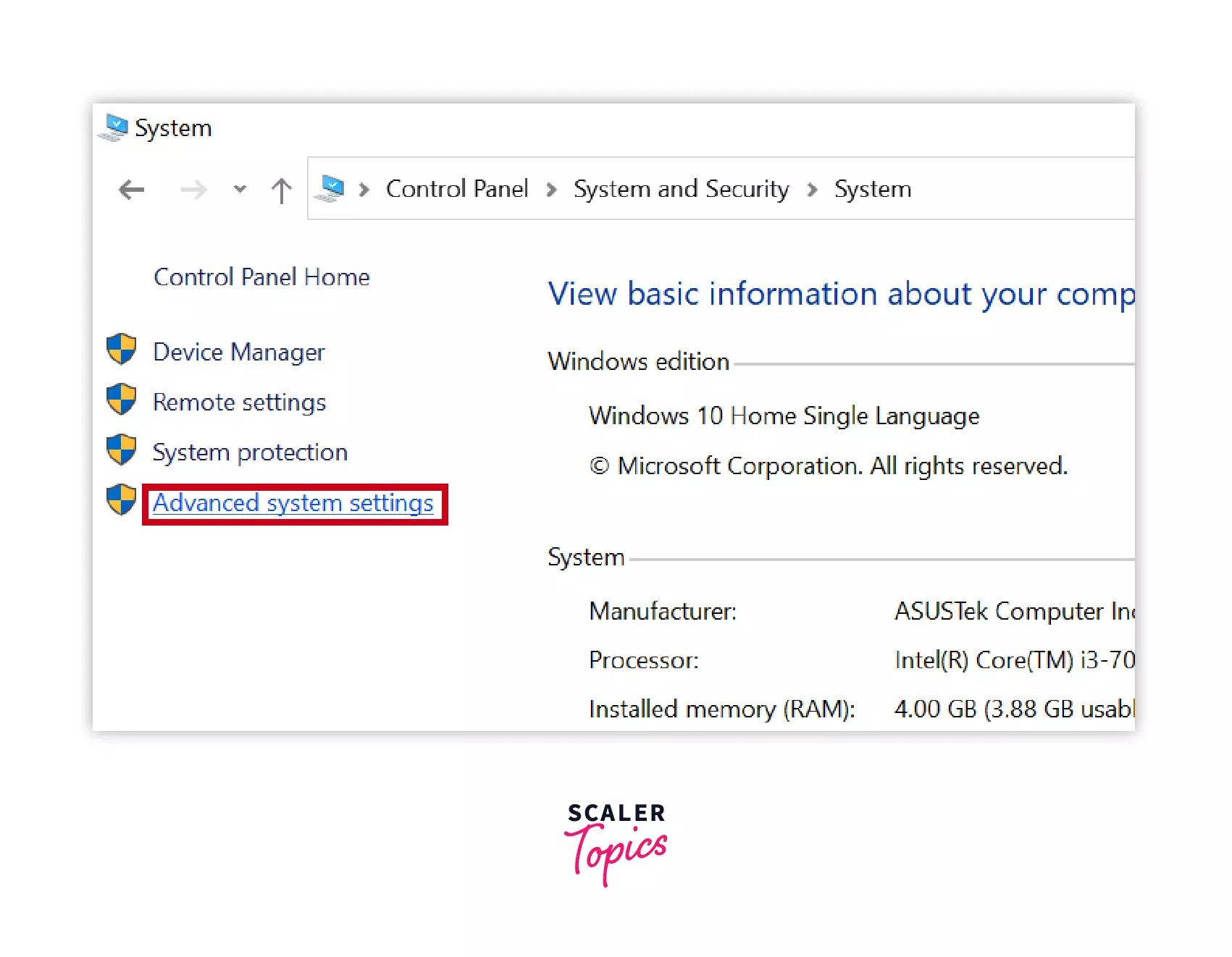
The pop-up visible on the screenshot below will appear on your screen. From there, go to the Environment Variables.
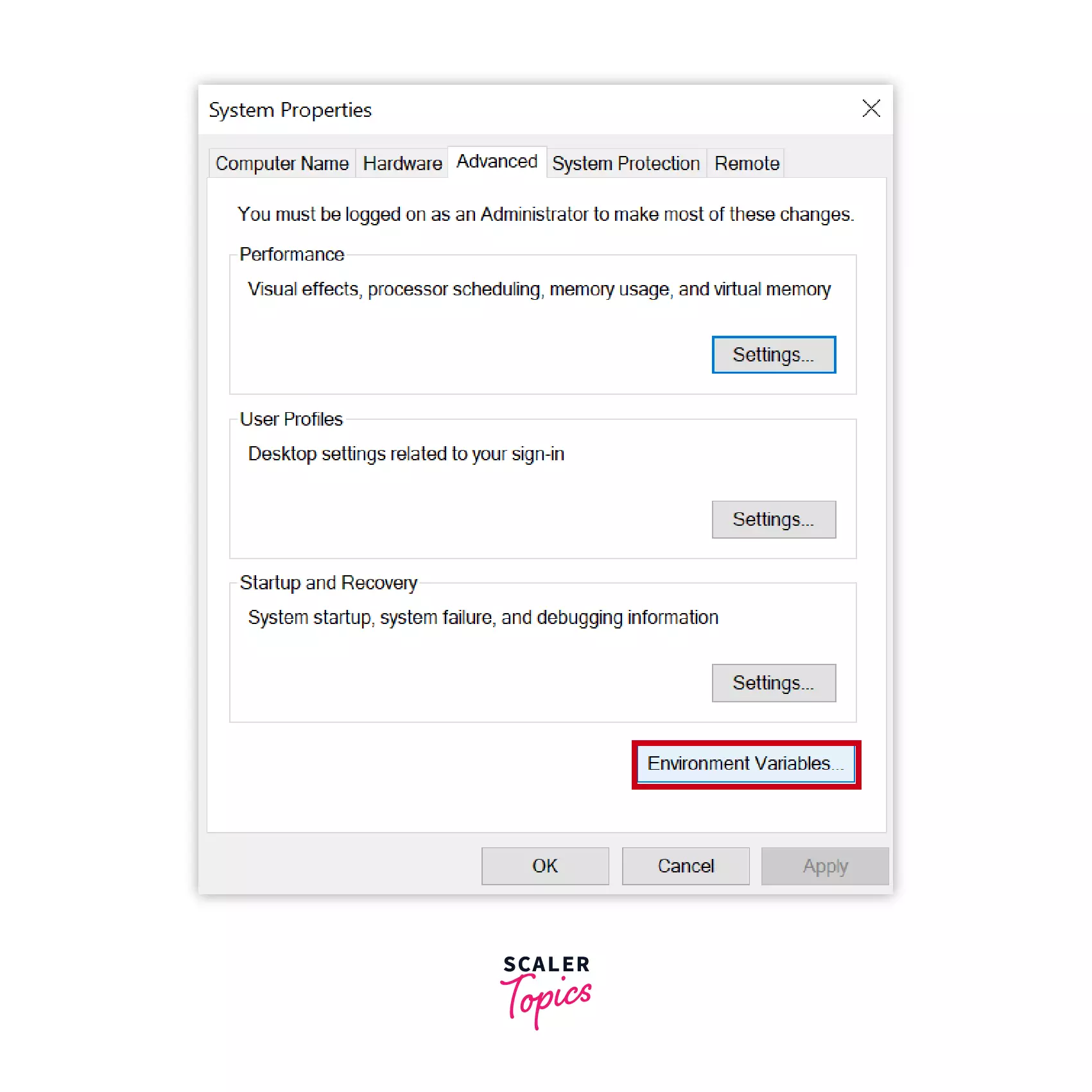
Now in the User variables for User section, select the path and click on the Edit button.
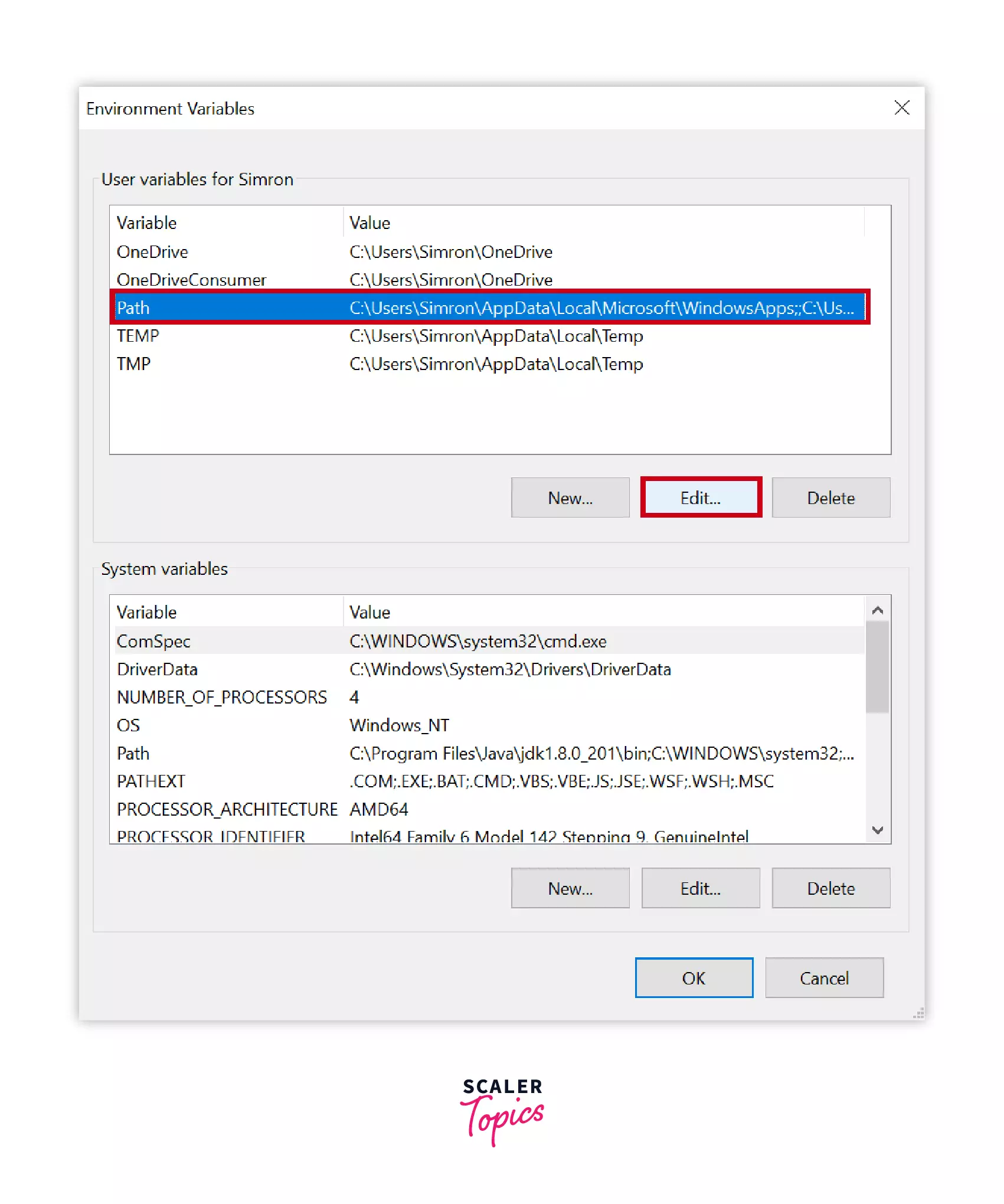
After clicking on Edit, the Edit environment variable will open. Now click on the New button.
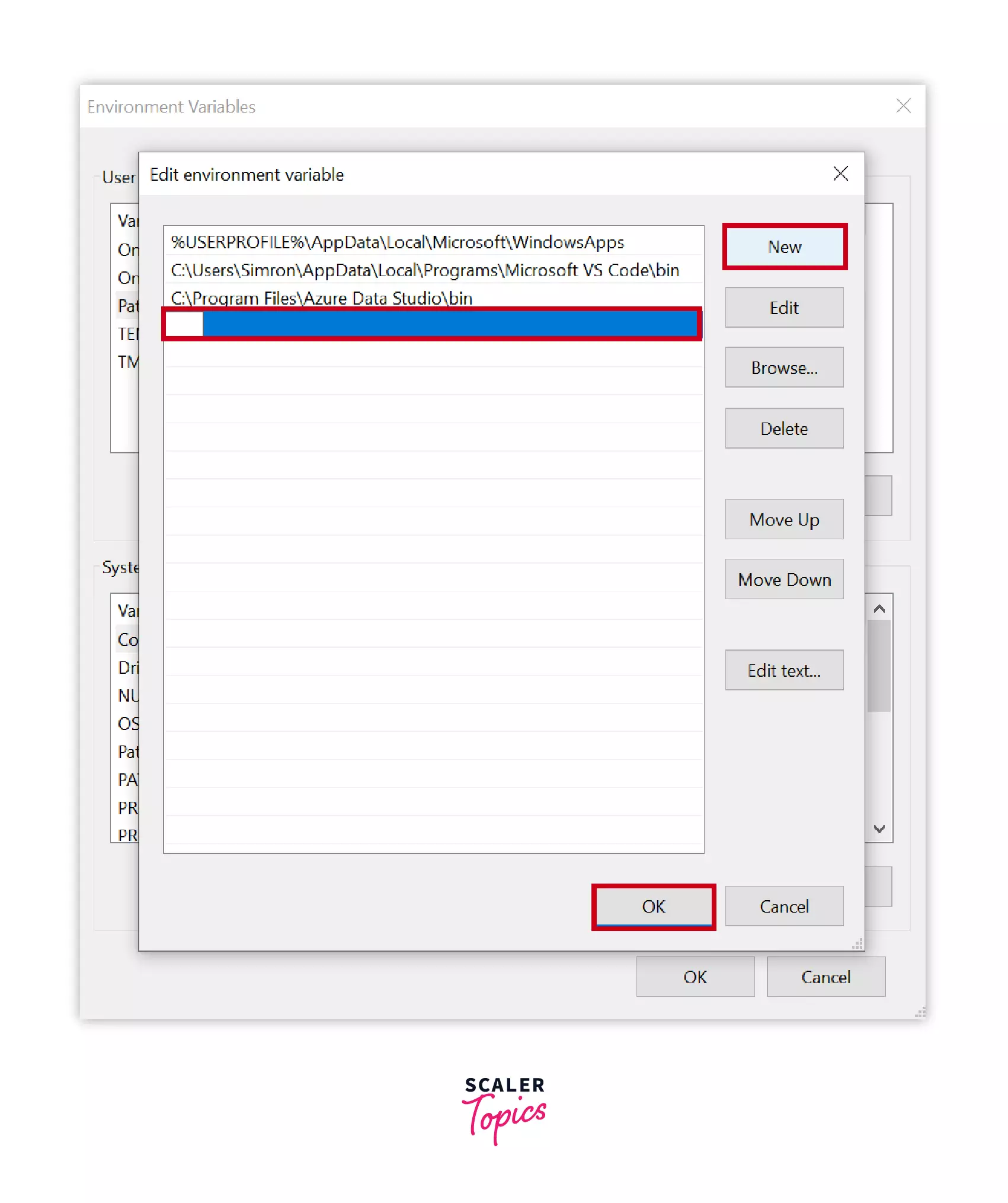
Paste the path of MinGW copied earlier and click on Ok. The path is set up successfully.
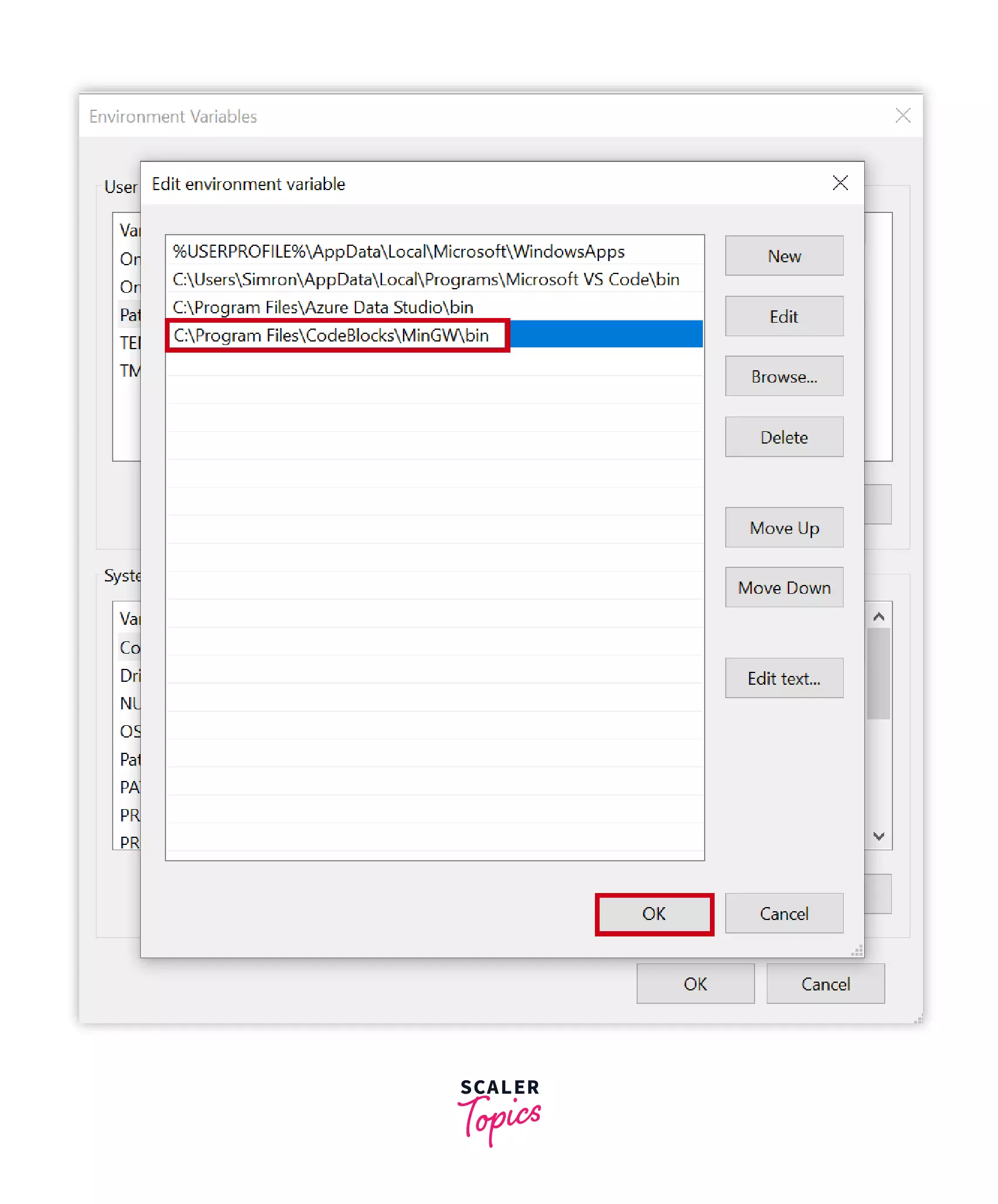
STEP 9: Compiler auto-detection
Now open up the Code::blocks IDE, and the Compilers auto-detection popup will appear, and the GNU GCC Compiler status will appear as Detected.
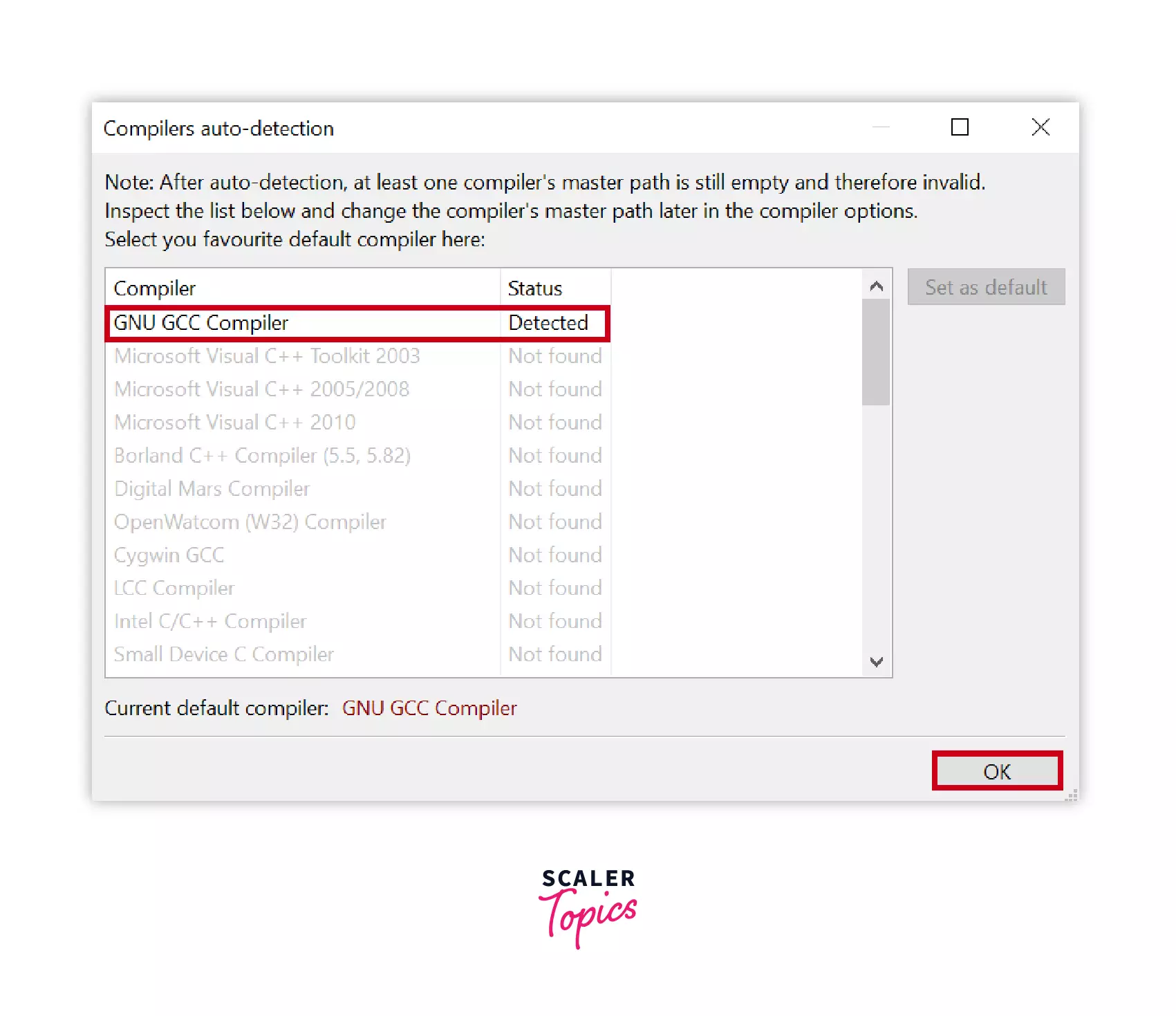
STEP 10: Open a new file in Code::Blocks
To check whether the IDE is working correctly or not, go to File>>New>>Empty File and click on it.

STEP 11: Write a hello world program in C
Write a hello world program in C. and save it with the .c extension.
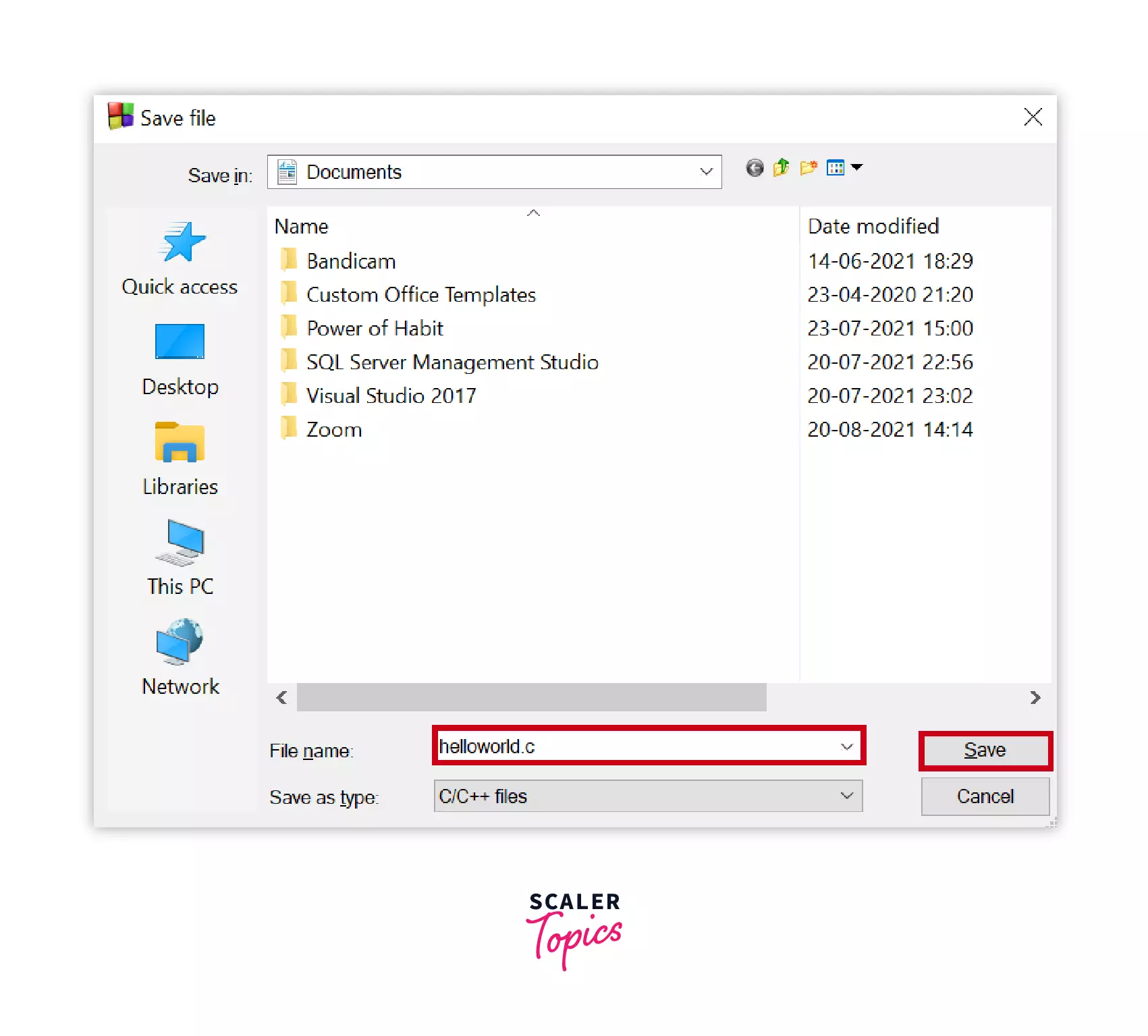
STEP 12: Output of C program
After saving, go to Build>>Run, and the program will compile and run. If the command prompt with hello world written on it will appear on the screen as shown below, then the code blocks are installed successfully!
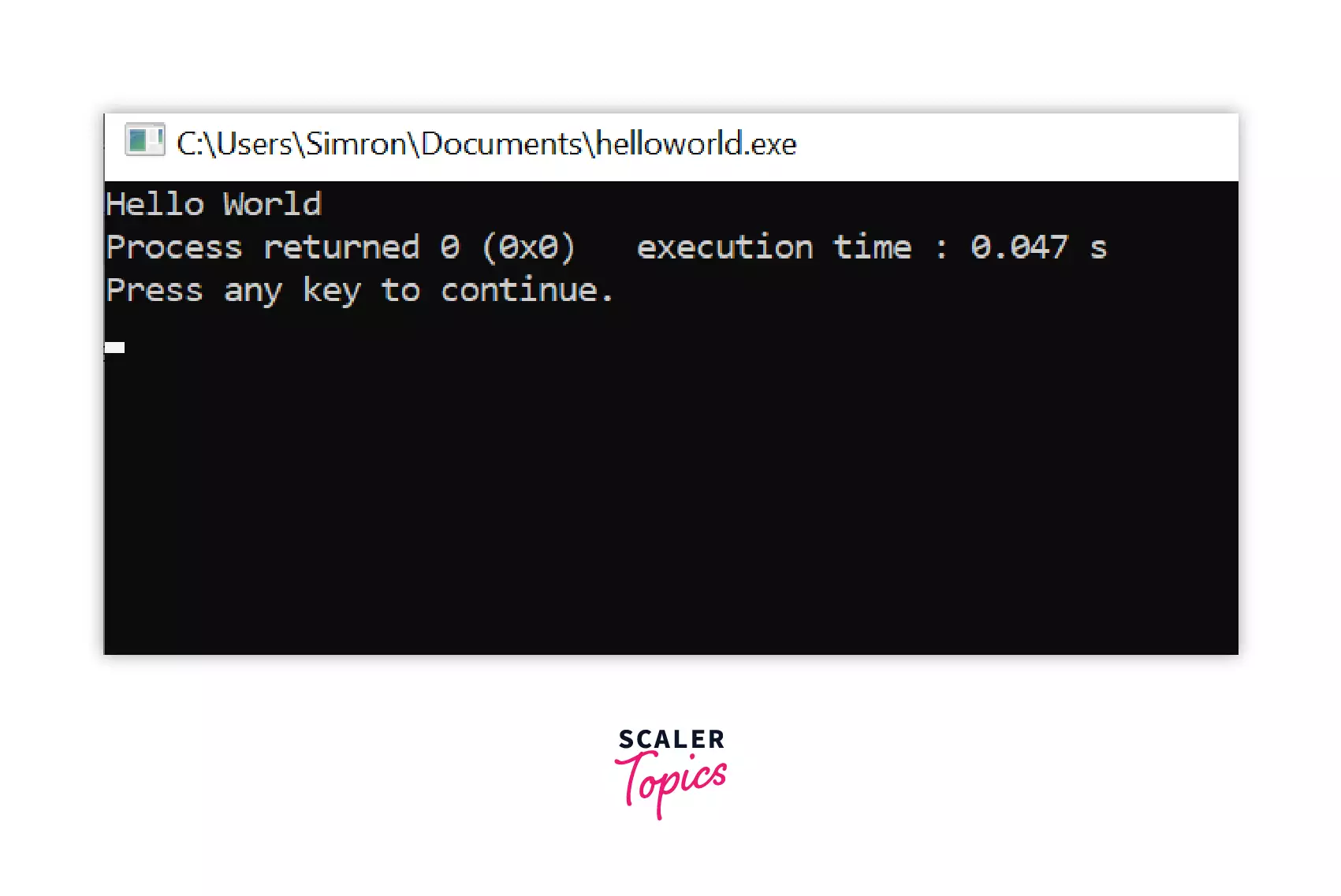
3. Install Cygwin
Cygwin
Cygwin is the runtime environment that also runs on Windows and Linux. It contains the c compiler and the vi editor as a text editor.
Below are the steps to download and install the Cygwin IDE.
STEP 1: Download Cygwin from the web
The first step to installing the Cygwin is to go to any of the browsers and type Cygwin Installation. The below search results will appear on your screen, click on the Cygwin Installation.
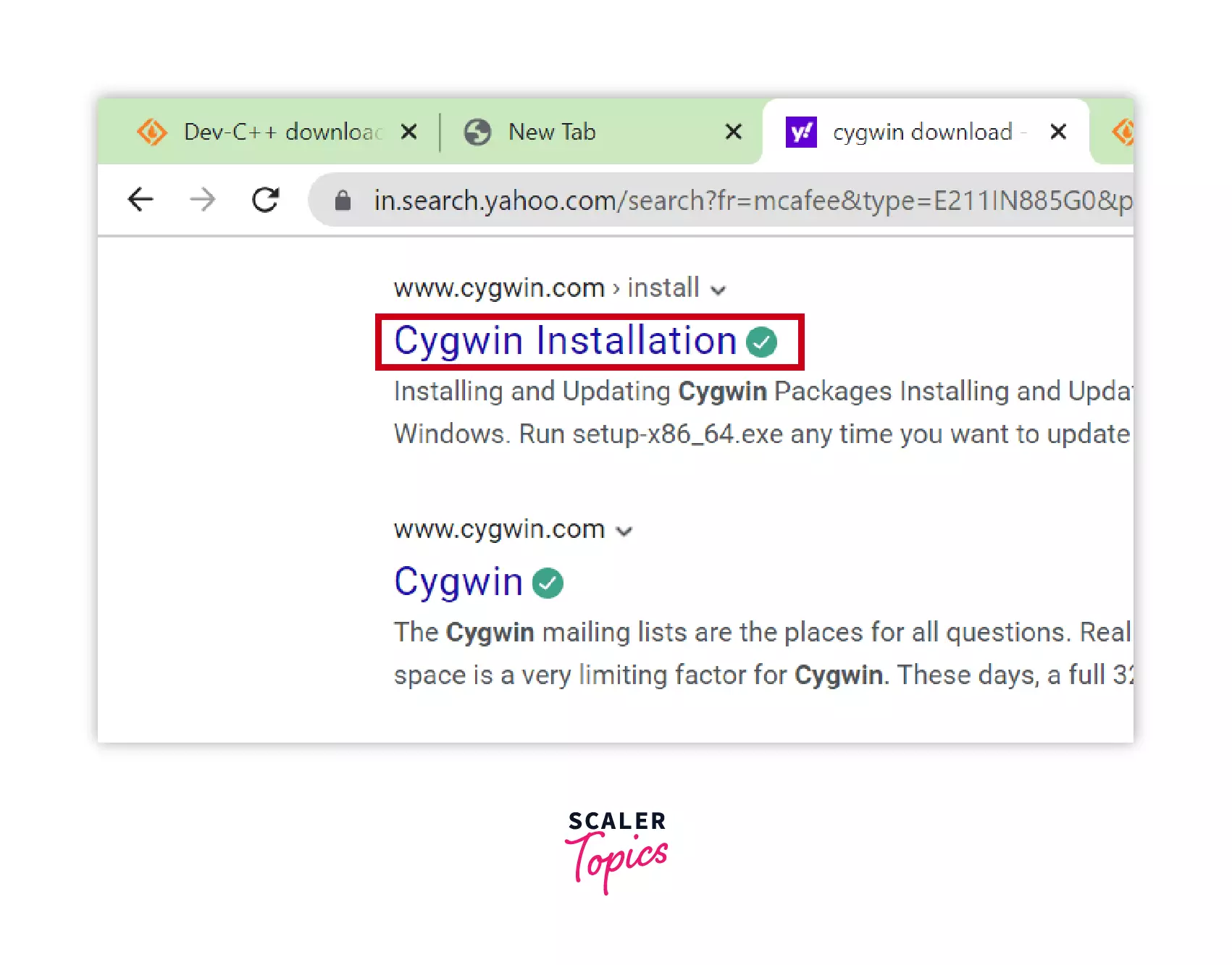
The link will take you to the Cygwin website. In the Installing Cygwin section, click on the setup link shown in the screenshot below.
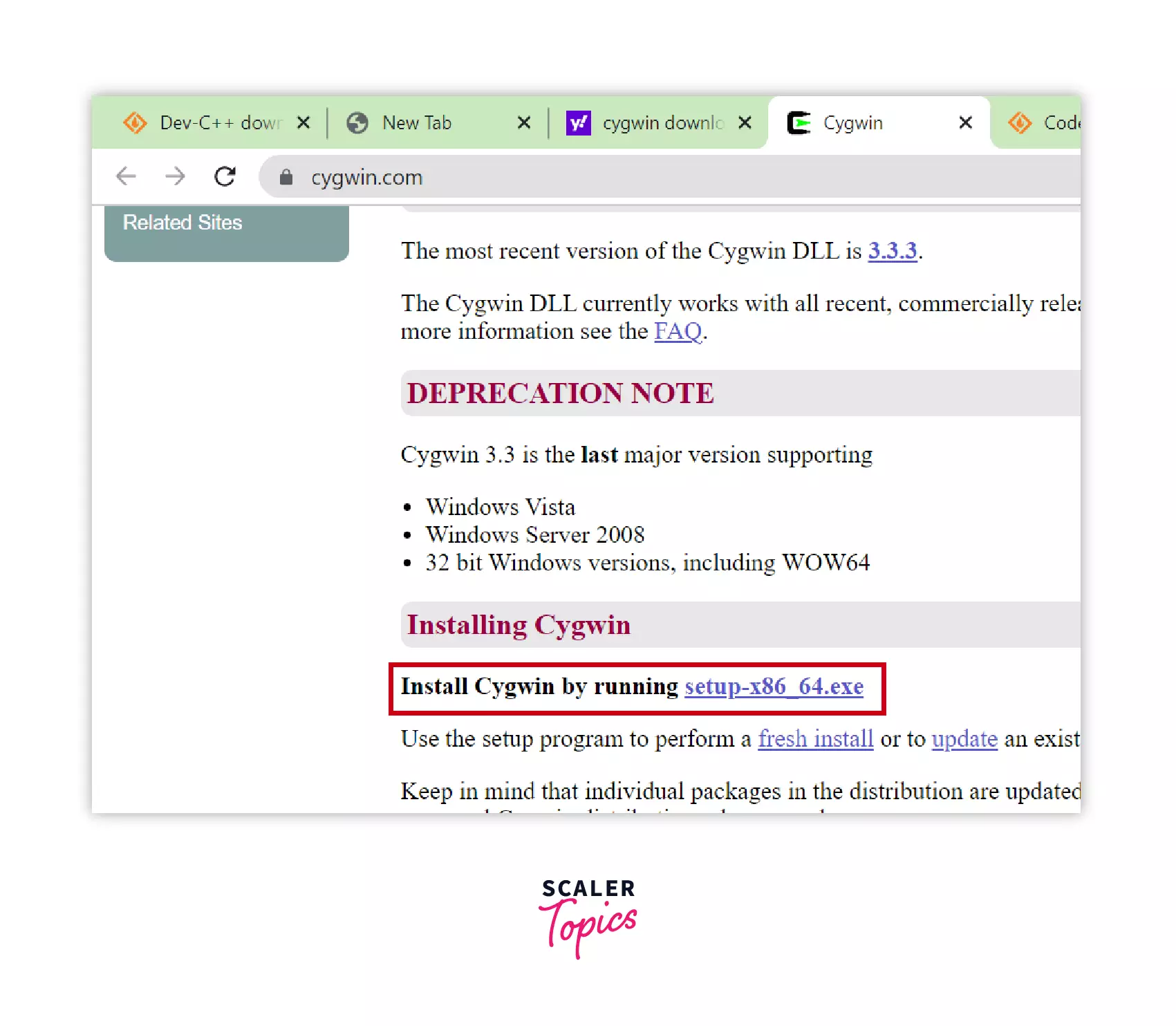
STEP 2: Locating the file on your computer
After clicking the link, the download will start, and the installation file will appear in the Downloads folder. Double click on the file.
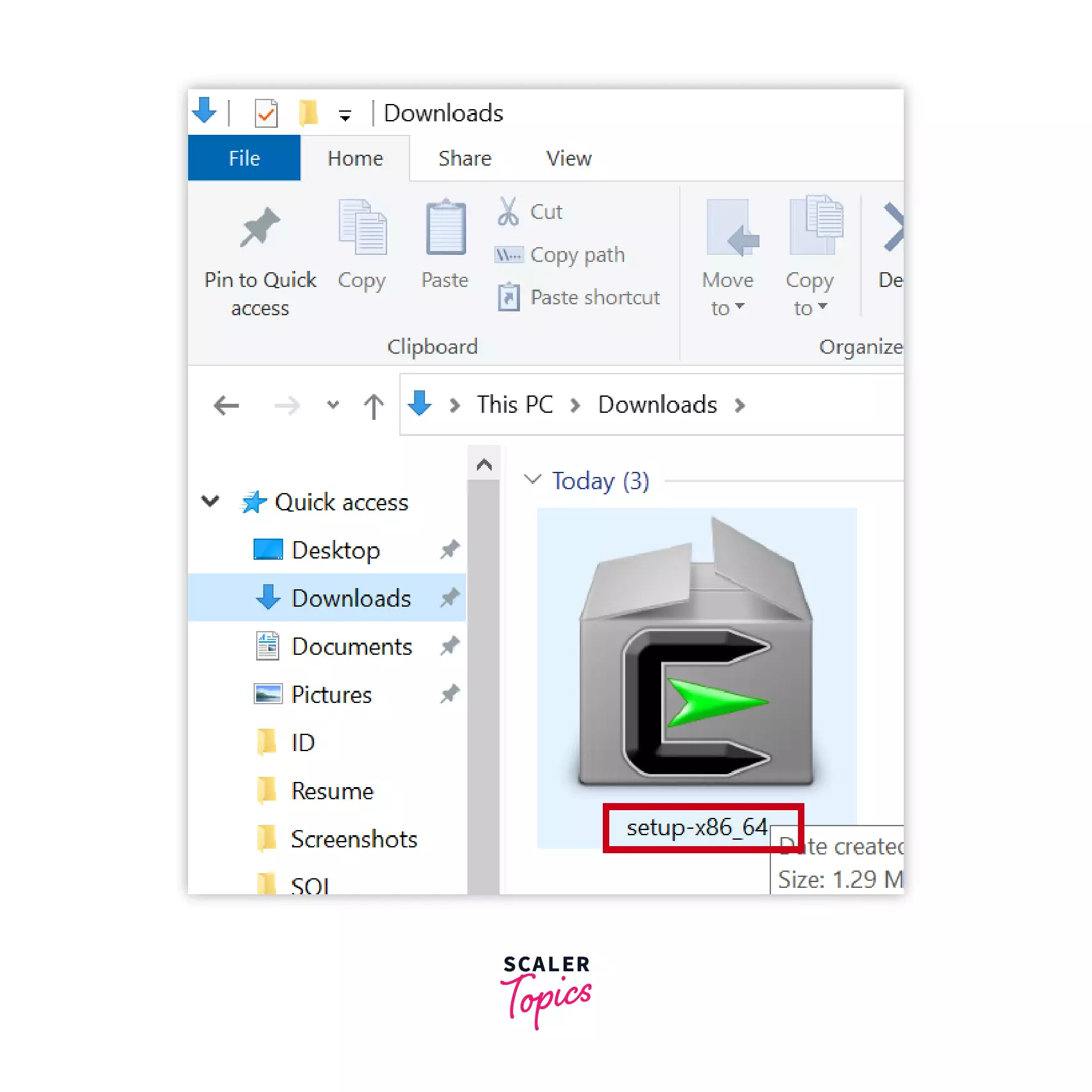
STEP 3: Start the setup for installation
The setup window will open. Click on the Next button.
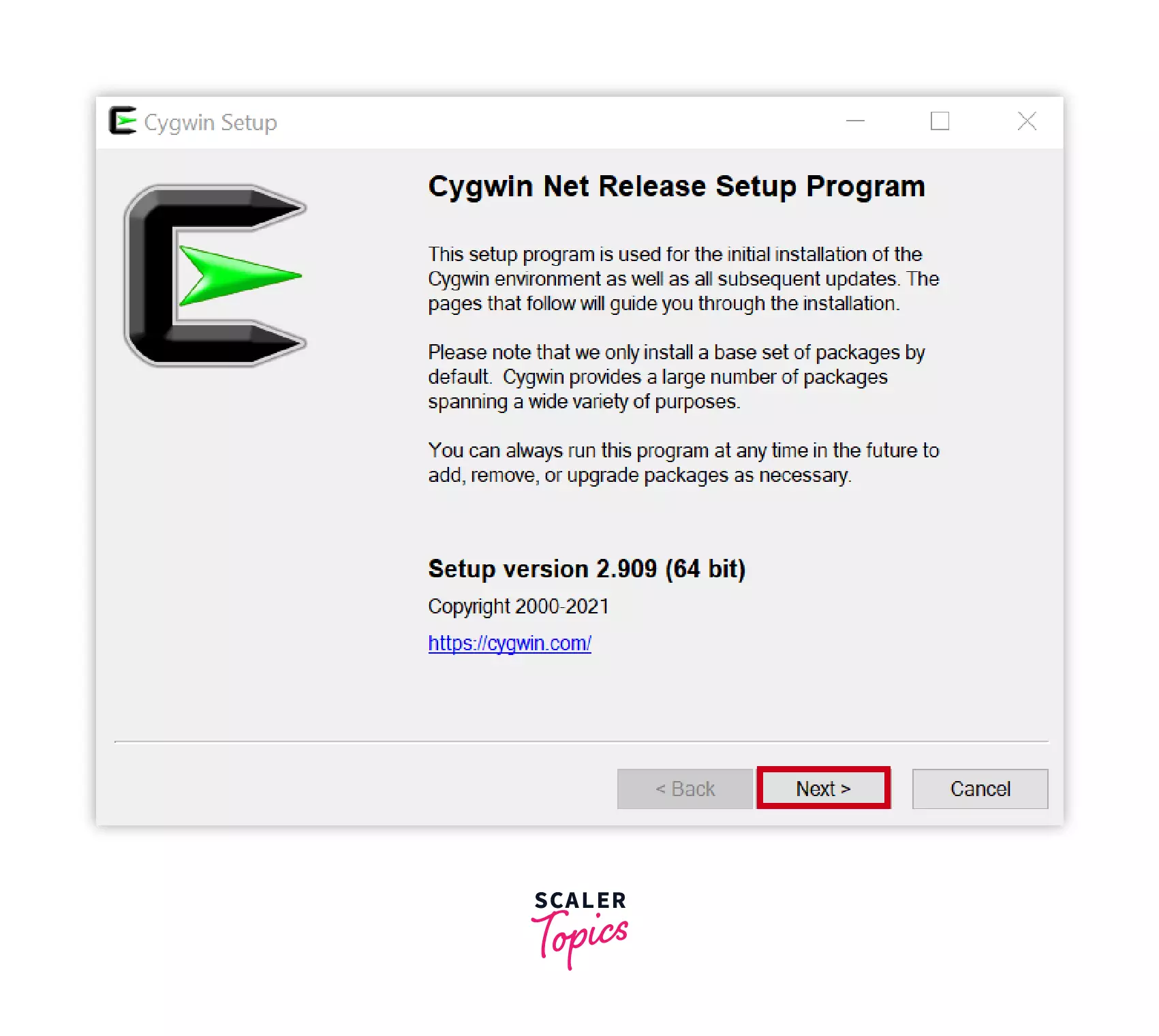
Check on the Install from the Internet and click on the Next button to continue.
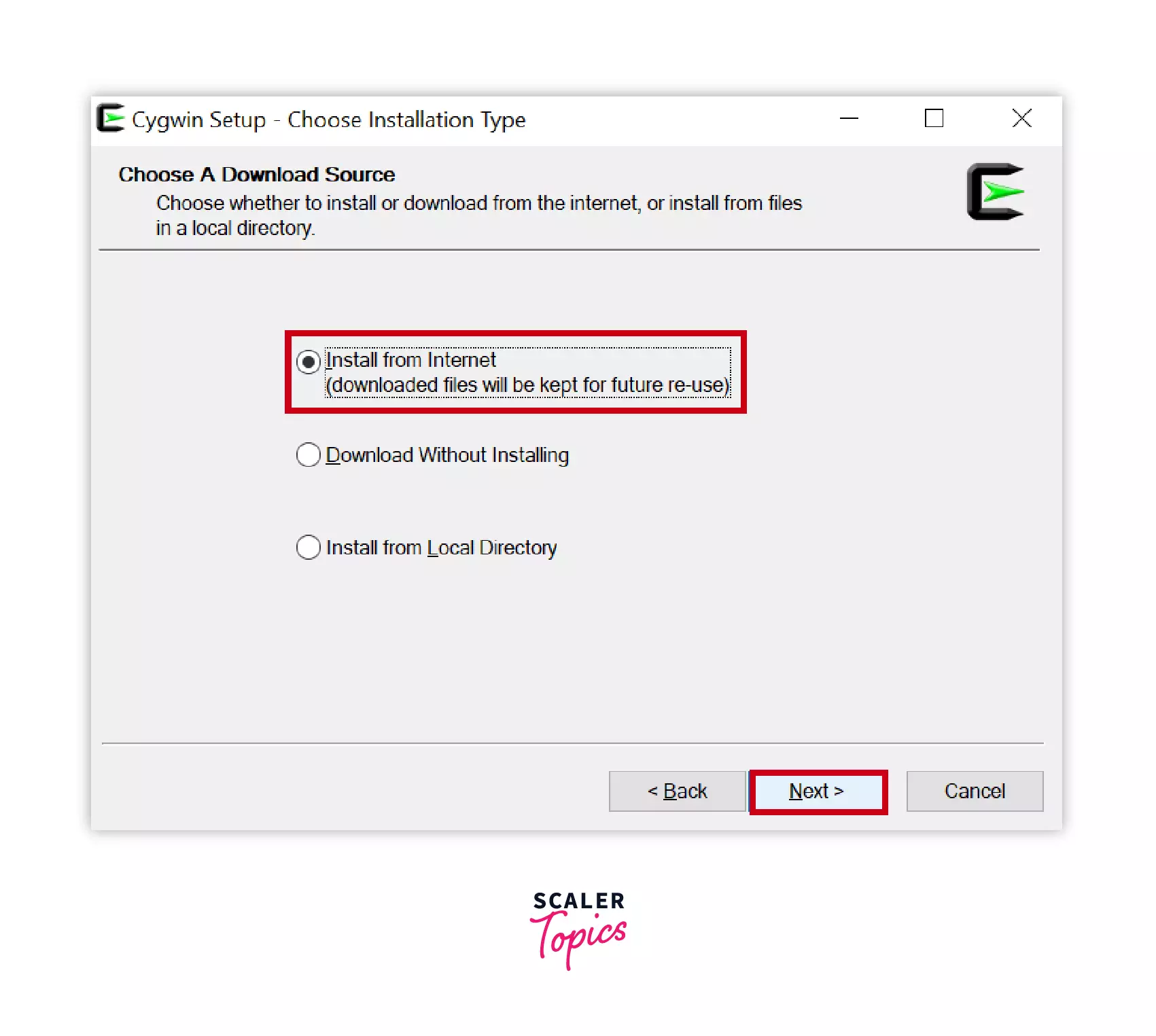
STEP 4: Select root install directory
Now select the root directory or automatically, it takes the C drive as the installation directory and makes sure to check on All Users, as it will be available to all users of the system. Click on the Next button.
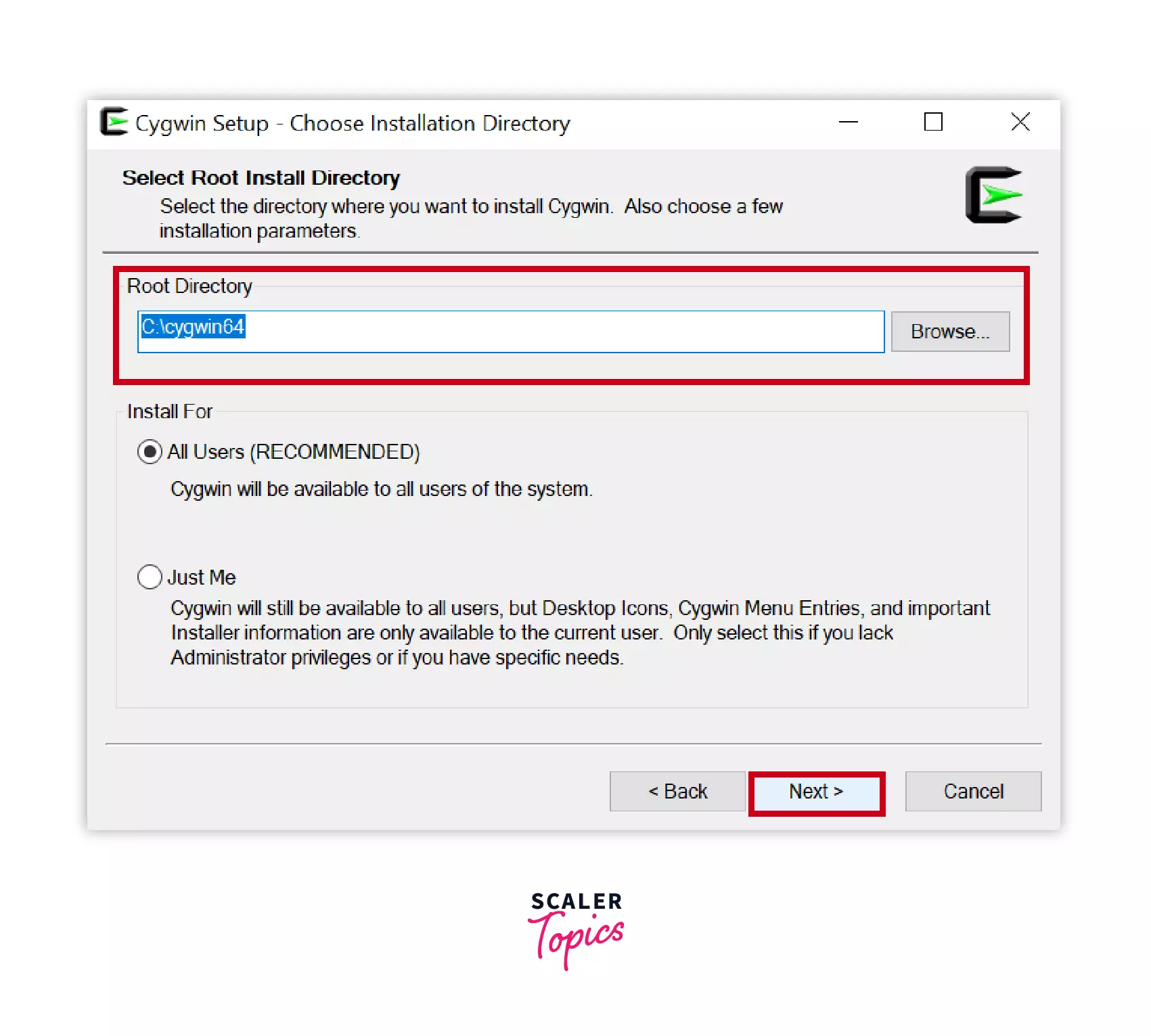
STEP 5: Select local package directory
Copy the directory path where you downloaded the setup file of Cygwin from the Internet and paste it into the textbox as shown in the screenshot. or It automatically takes the path of your Downloads folder.
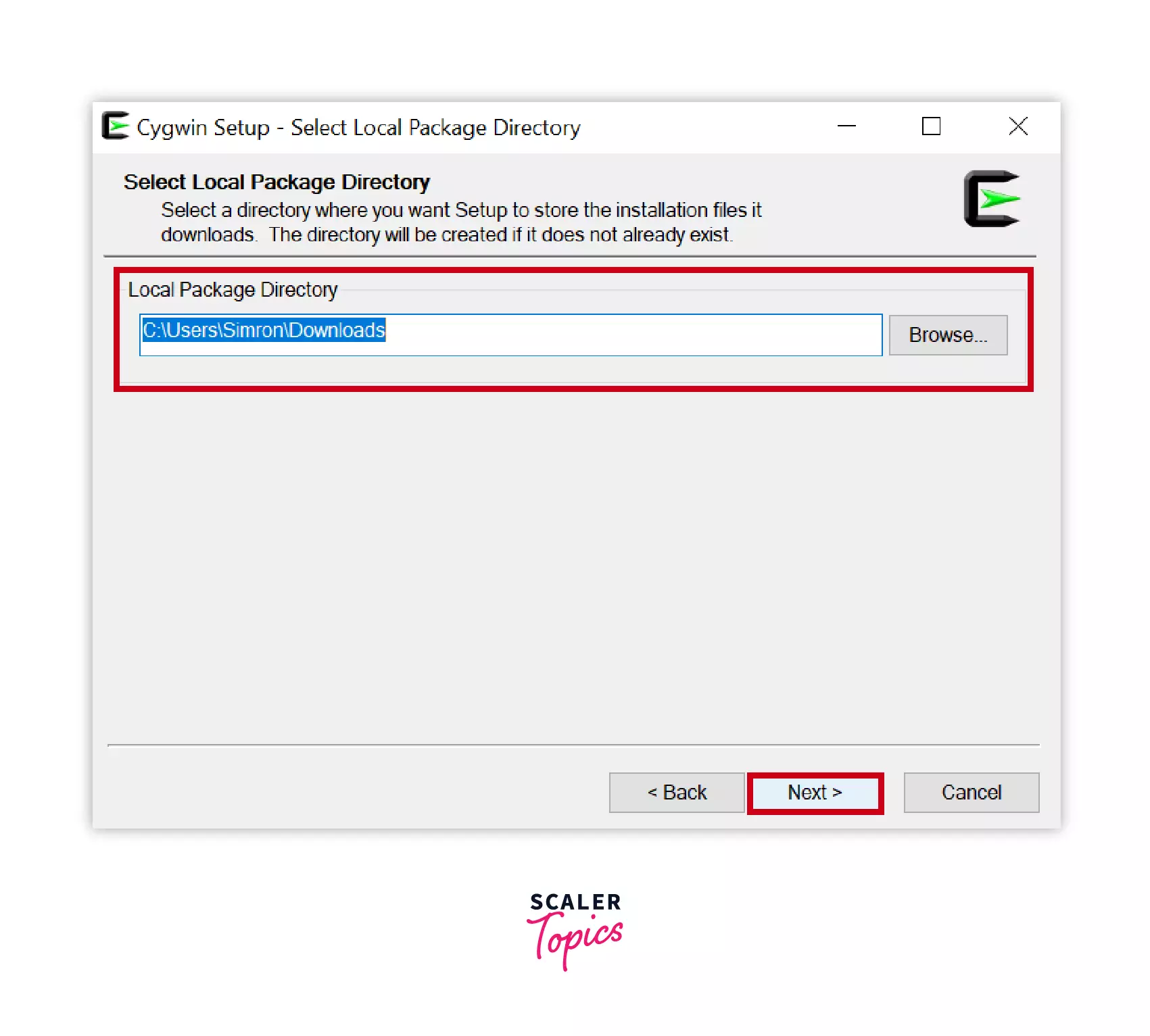
STEP 6: Select your Internet connection
As we choose the Install from internet option in Step 5, the setup needs to know how you want to connect to the Internet. So, check on the first option, i.e., Use System Proxy Settings because a proxy server is an intermediary between your Windows 10 computer and the Internet. This server makes requests to websites and servers on the internet for you. Click on Next to proceed.
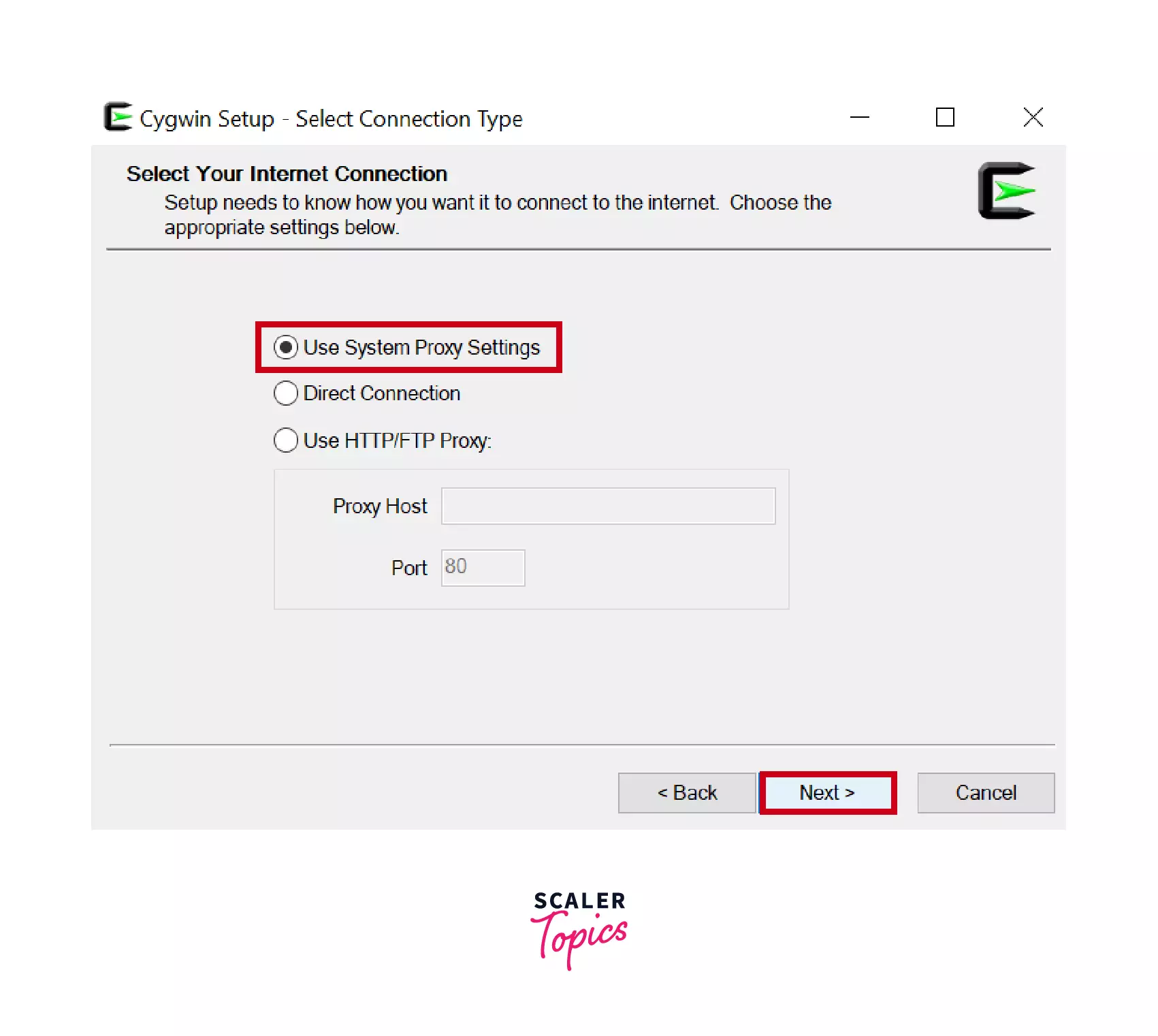
STEP 7: Choose a download site
Now choose a website from the below-mentioned available download sites and click on Next to proceed.

Now, the file will start downloading, wait until the download finishes, and click on Next to proceed.
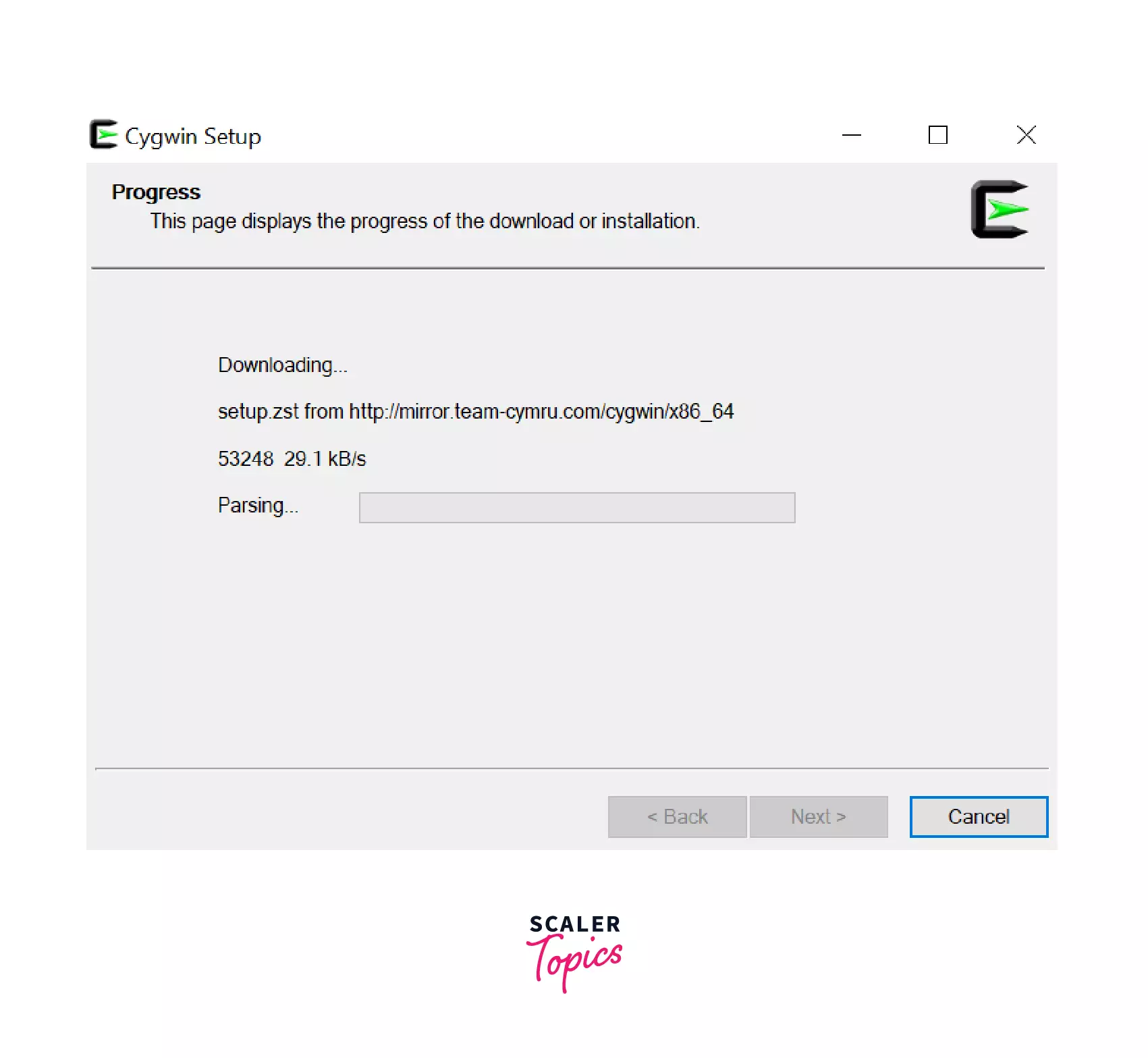
STEP 8: Select the packages to download
Now we have to manually select the packages to install for C Programming. Please follow these steps correctly. There are 4 packages to be downloaded for the compiler. GCC core
First, type GCC in the search box and select GCC core from the list with the latest version, as shown in the screenshot.
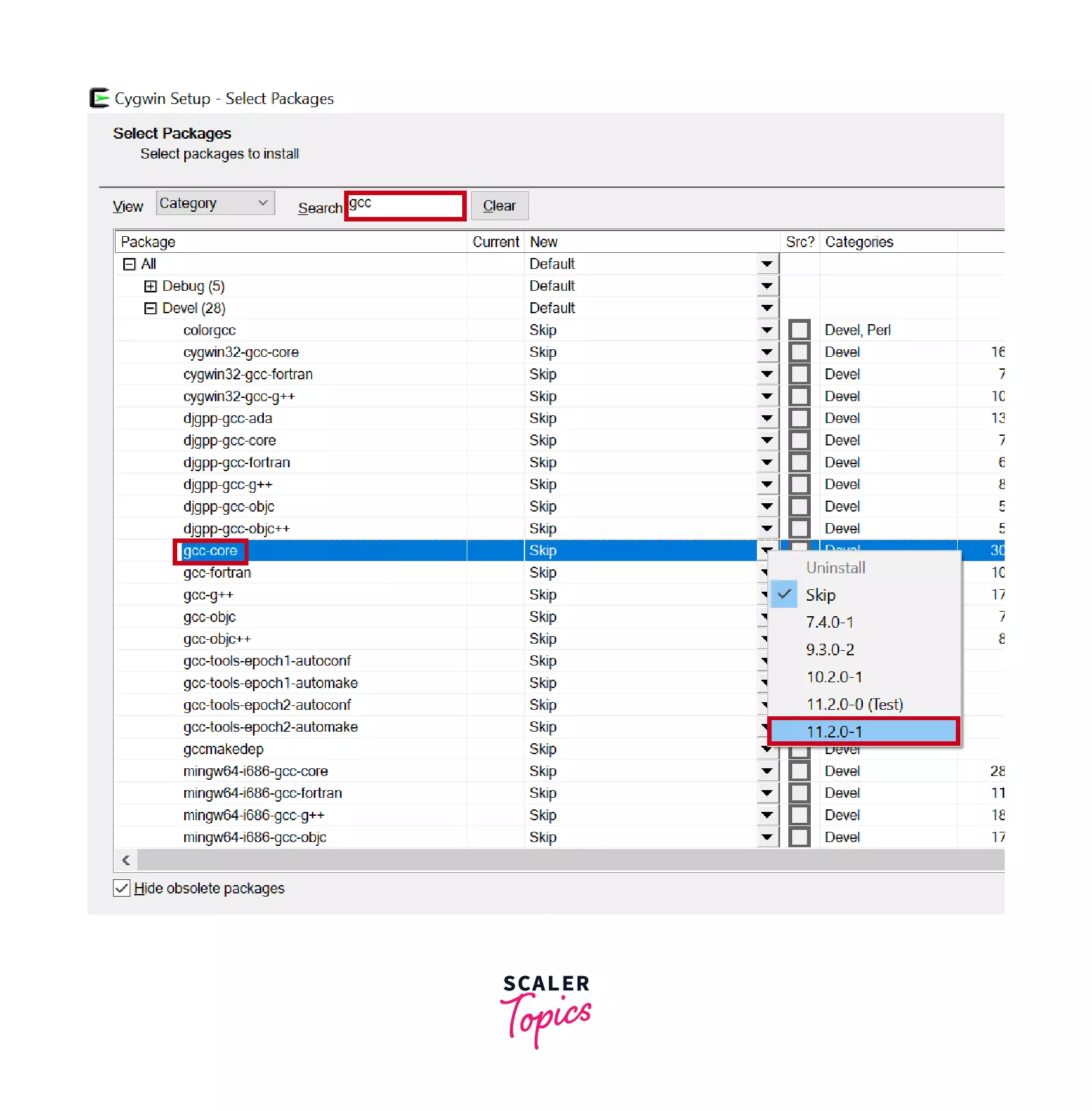
gcc g++ package
Second, type GCC in the search box and select gcc g++ from the list with the latest version as shown in the screenshot.

make Third type make in the search box and select make from the list with the latest version as shown in the screenshot.
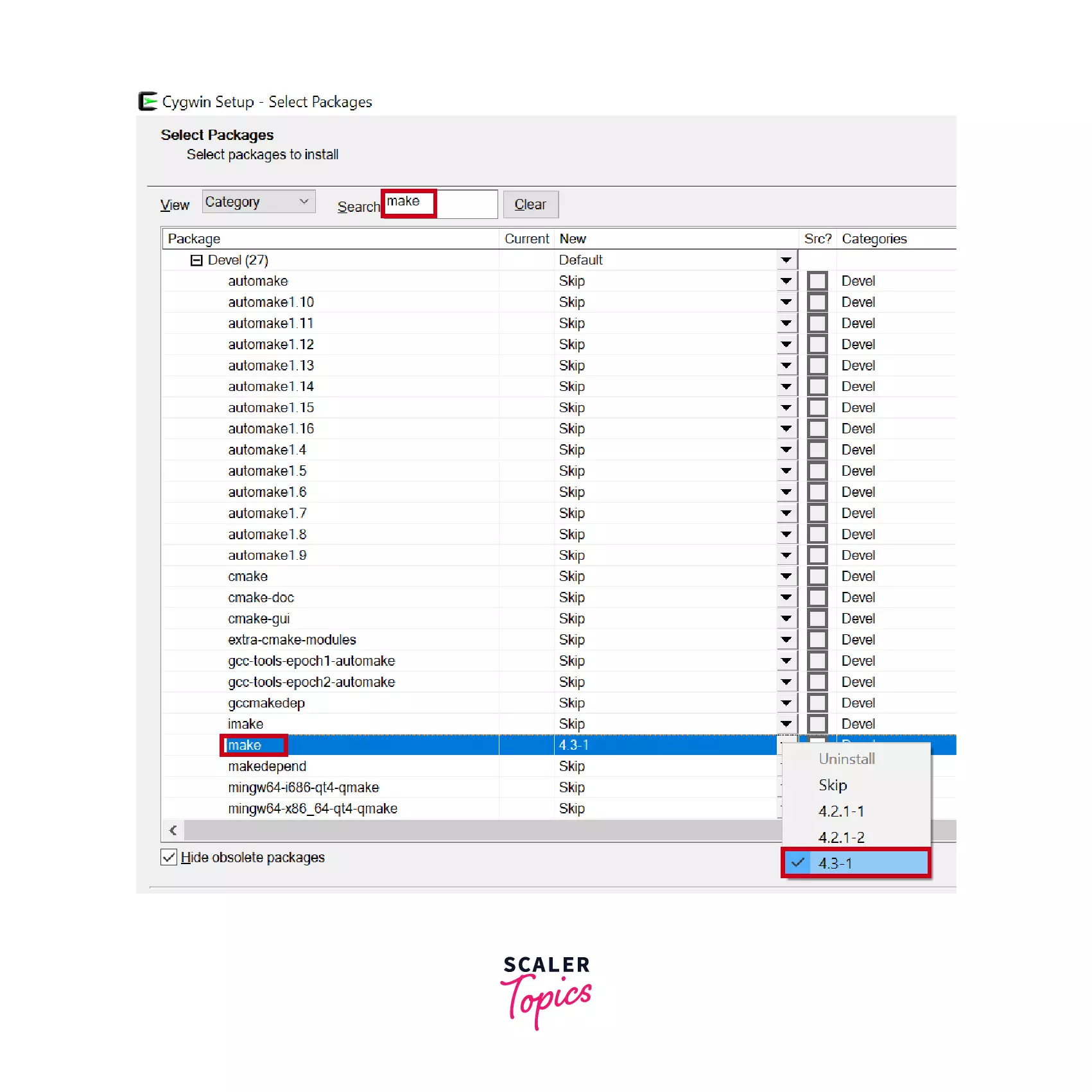
gdb Fourth, type gdb in the search box and select gdb from the list with the latest version, as shown in the screenshot.
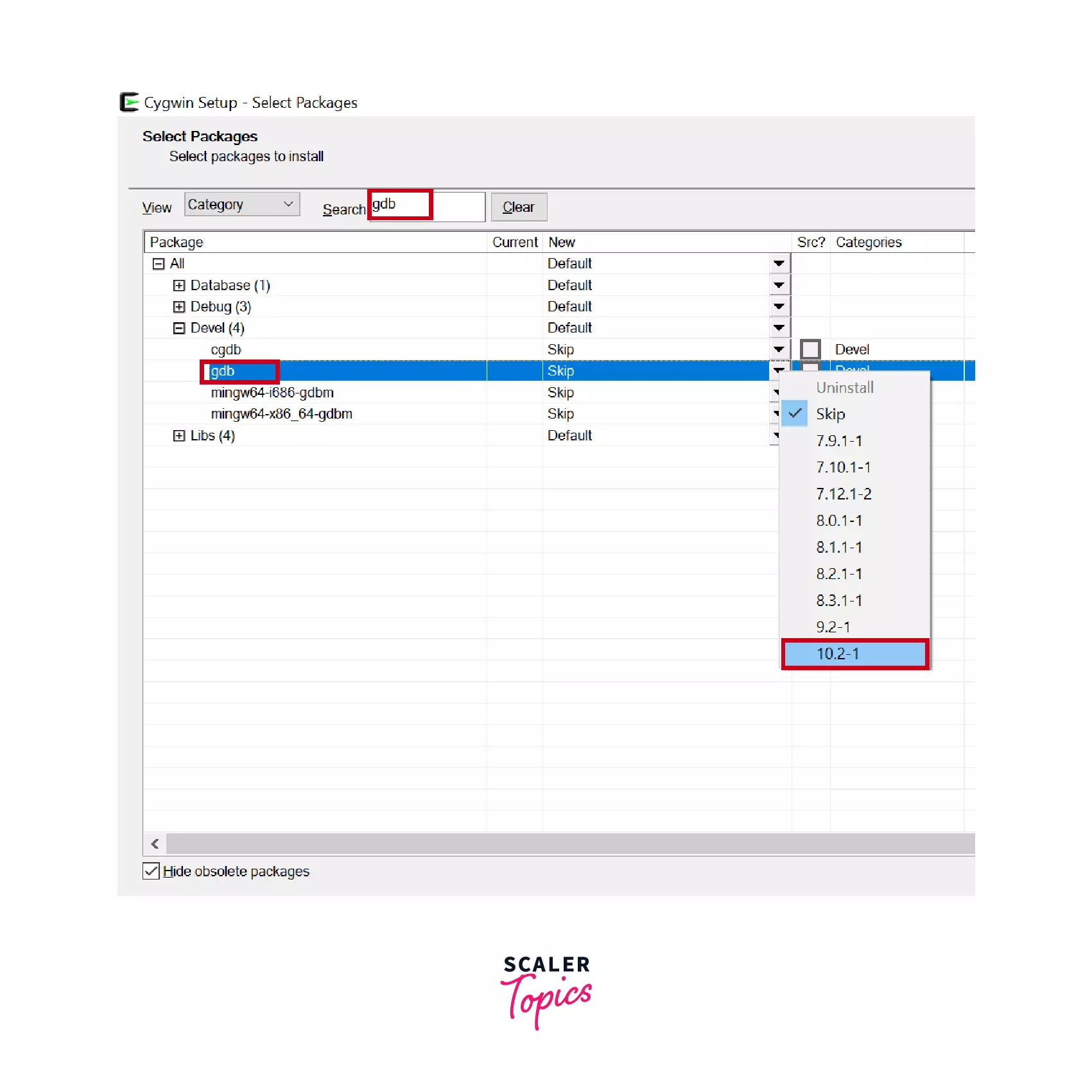
STEP 9: Review changes
In this window, all the plugins and installations that will be installed with the Cygwin setup will appear to check whether you've missed something. After checking, click on Next and proceed.
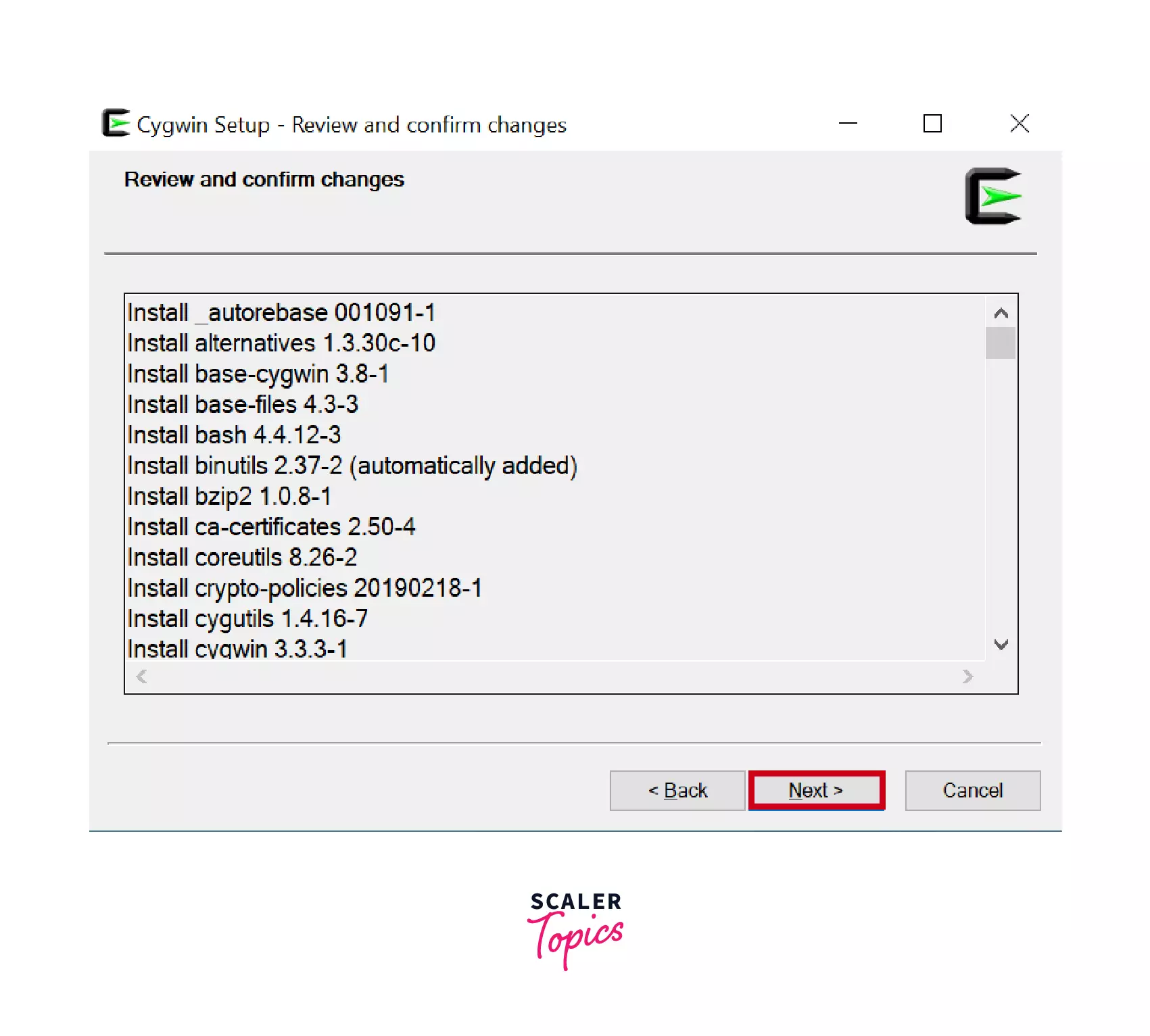
STEP 10: Progress
This window will display the progress of download or installation. After completion, click on Next and proceed.
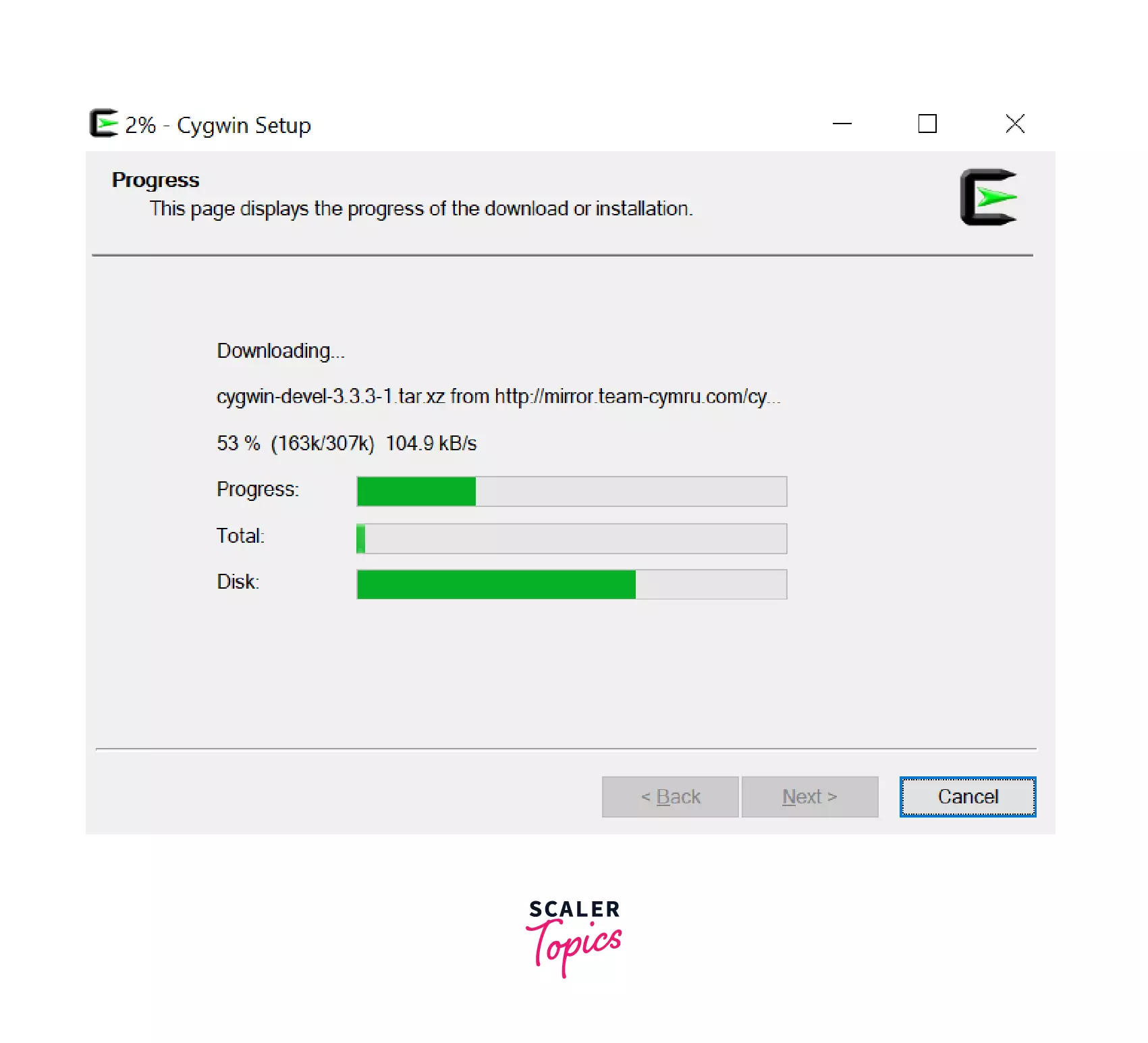
STEP 11: Create icons
To create icons on the Desktop and start the menu, check the input boxes and click on Finish to finish the setup.
![]()
STEP 12: Installation Complete
Now the installation for Cygwin is completed. Type Cygwin in the Start menu to open the Cygwin 64 terminal.
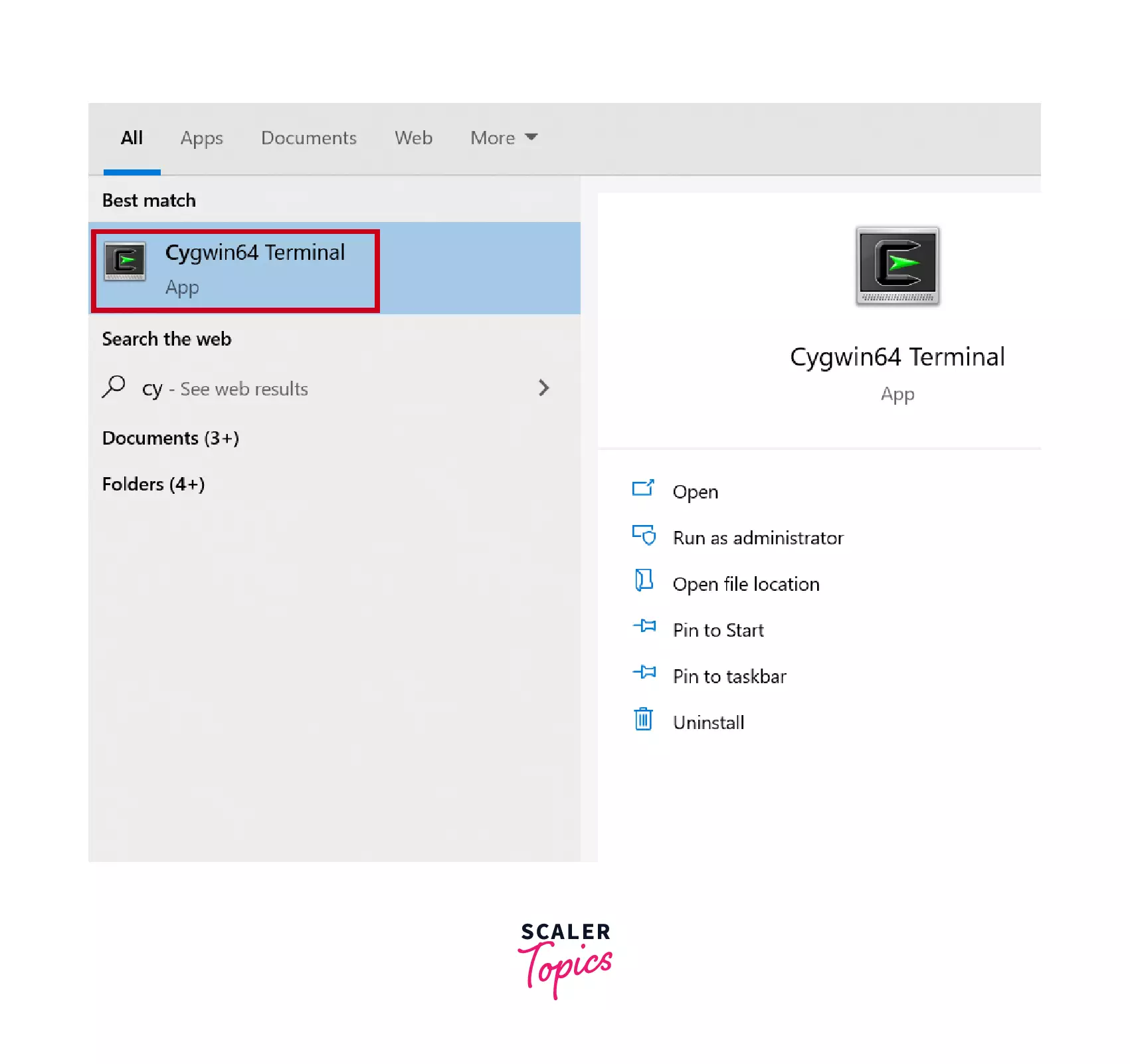
Conclusion
- The C Environment setup includes the combination of Text Editor like Notepad, Textpad, Notepad++, and the compiler like GCC C++.
- The C Compiler can also compile the C++ code.
- The C Program should be saved with the .c extension; for C++, the extension should be .cpp.
- An IDE combines a Compiler and a text editor in a single GUI(Graphical User Interface).Some IDEs are DEV C++, Code::Blocks, VS Code, Turbo C++.
- Cygwin is not an IDE it is the runtime environment that runs on Windows and Linux as well it contains the c compiler and the vi editor as a text editor.
